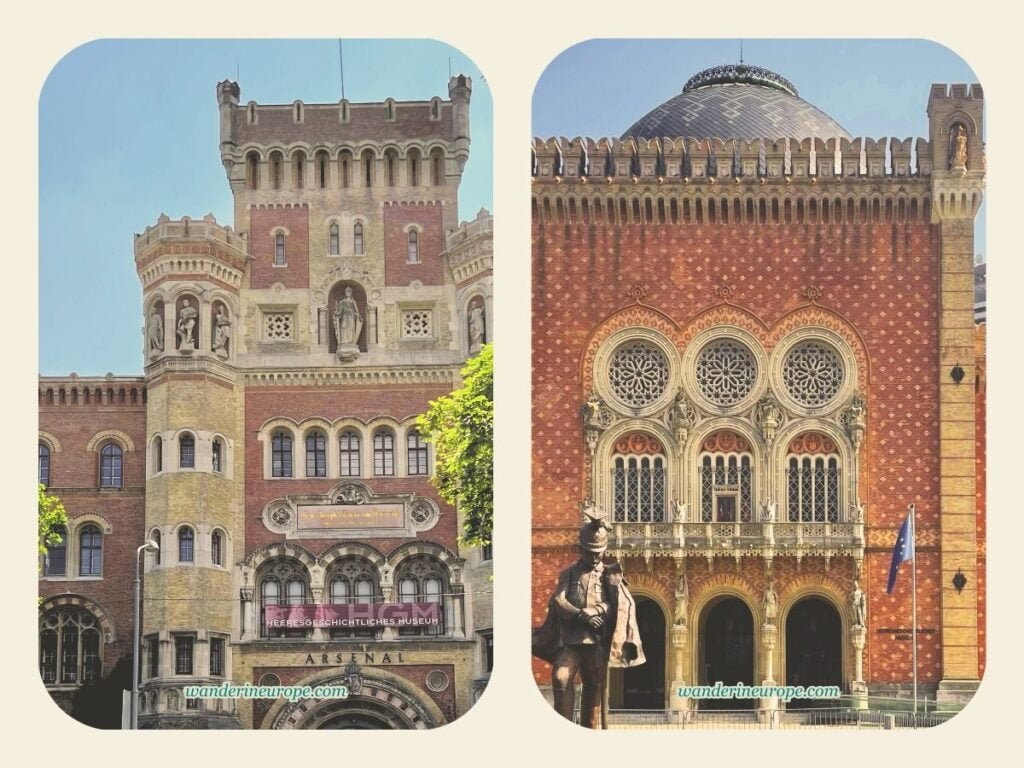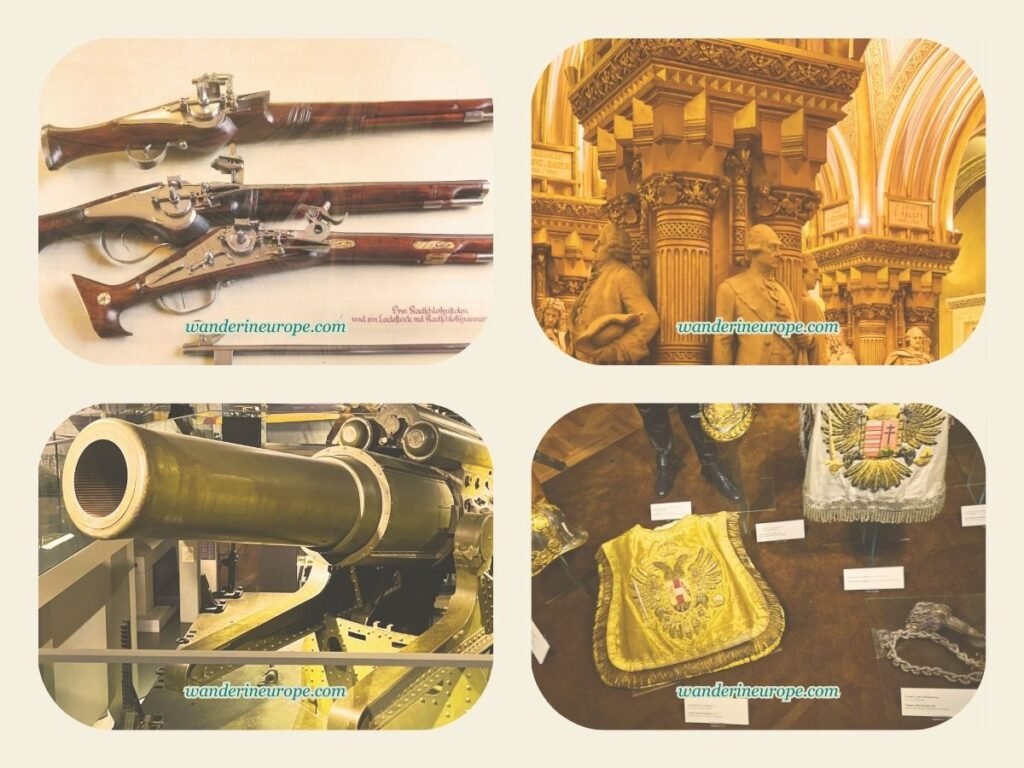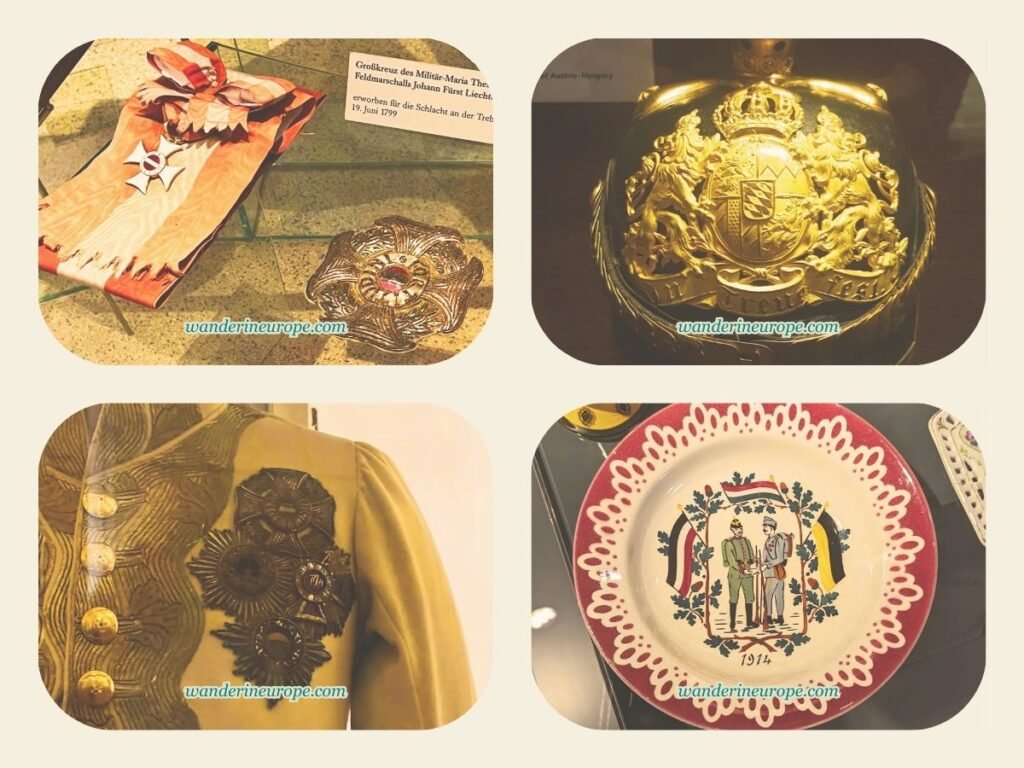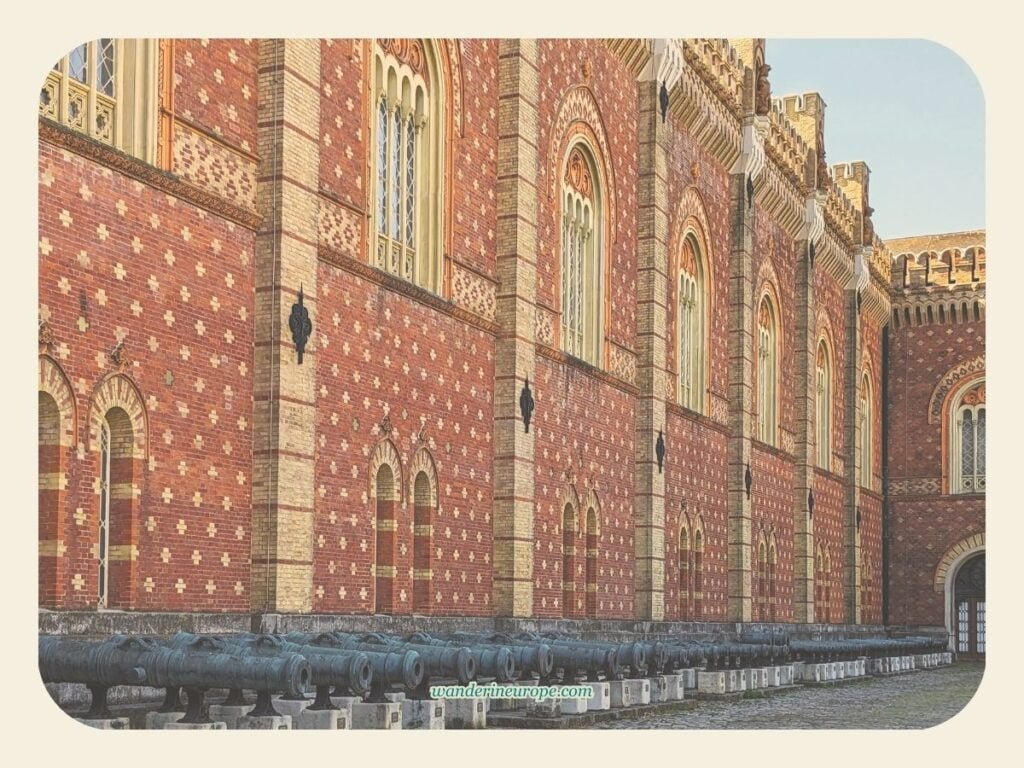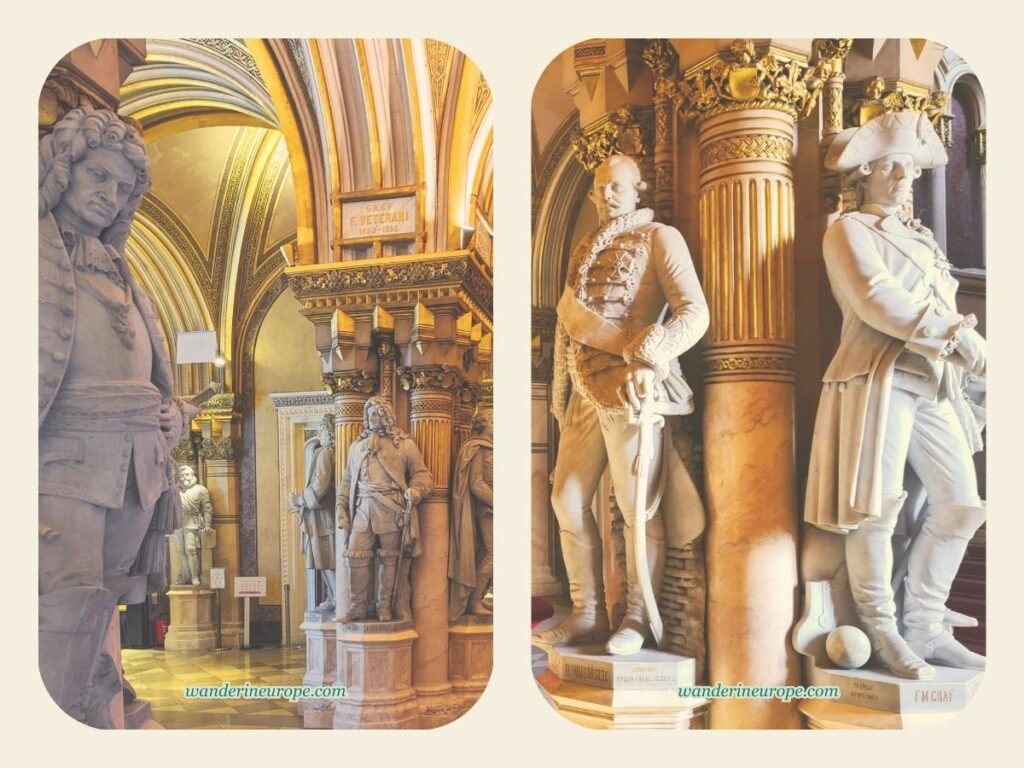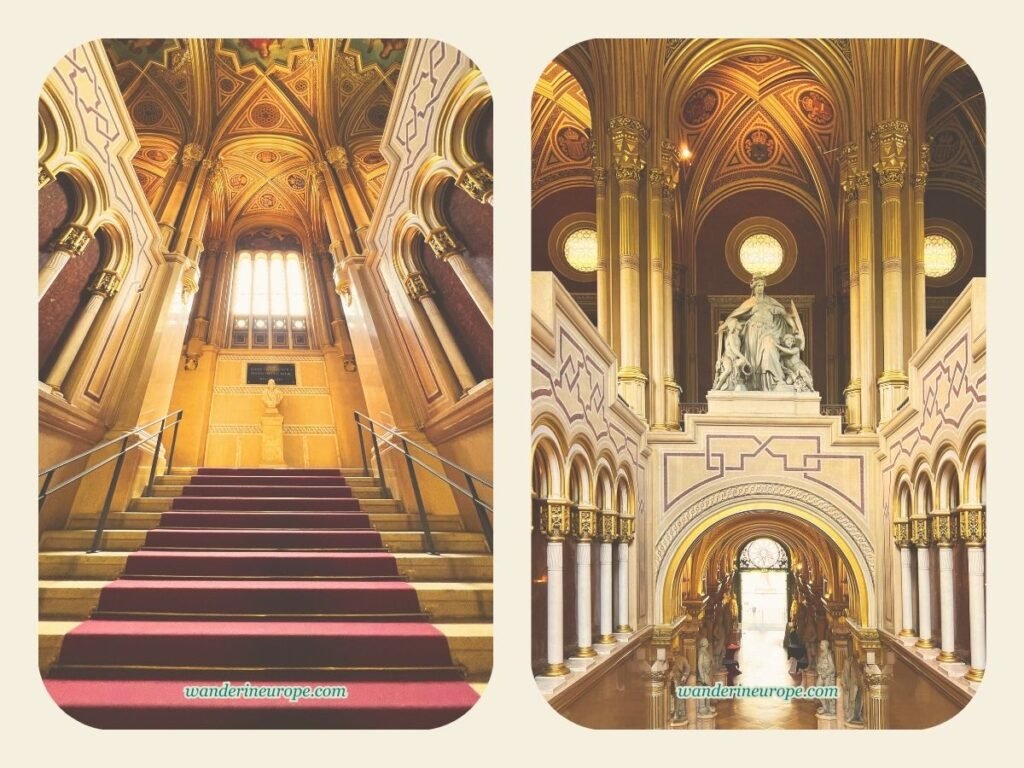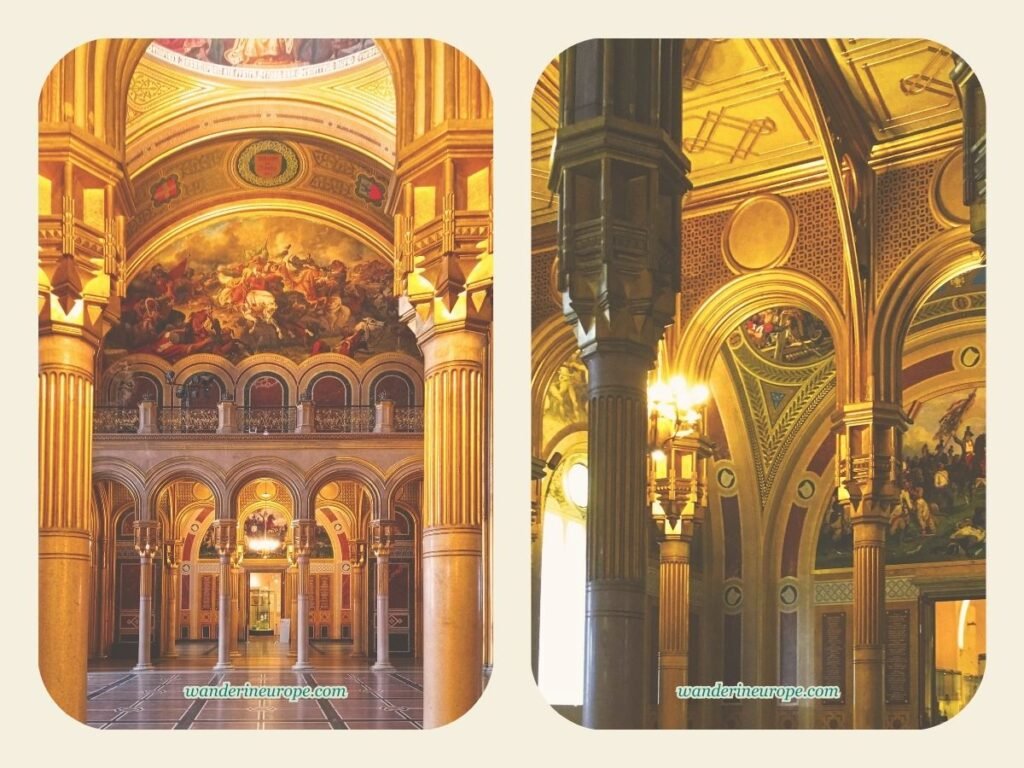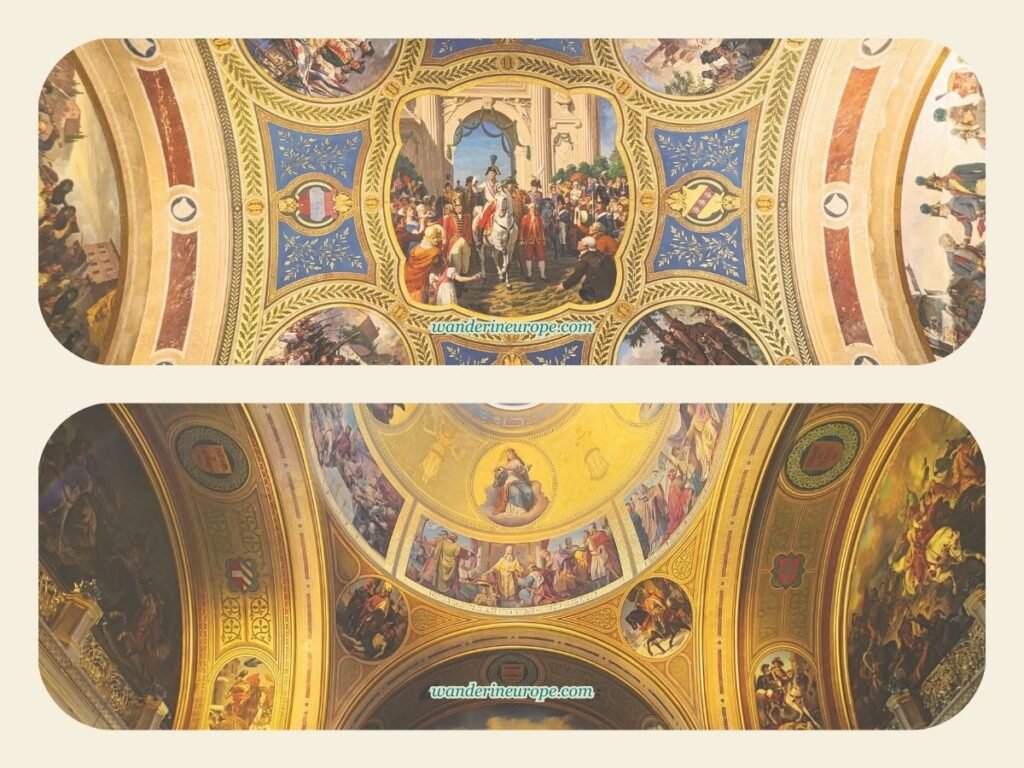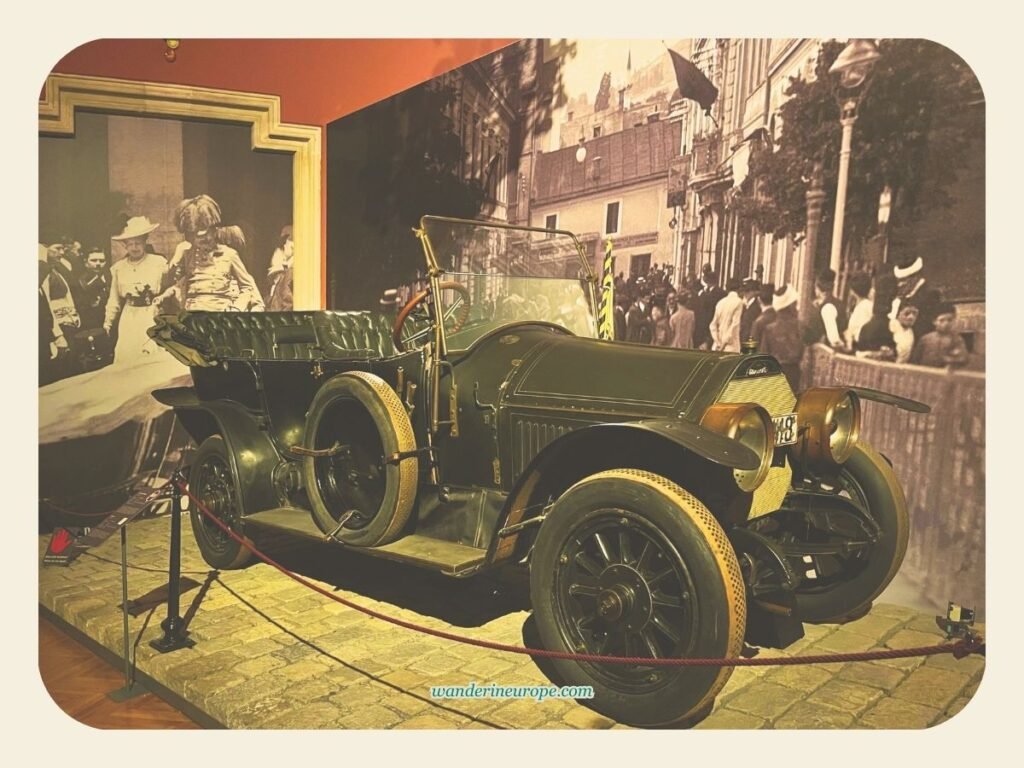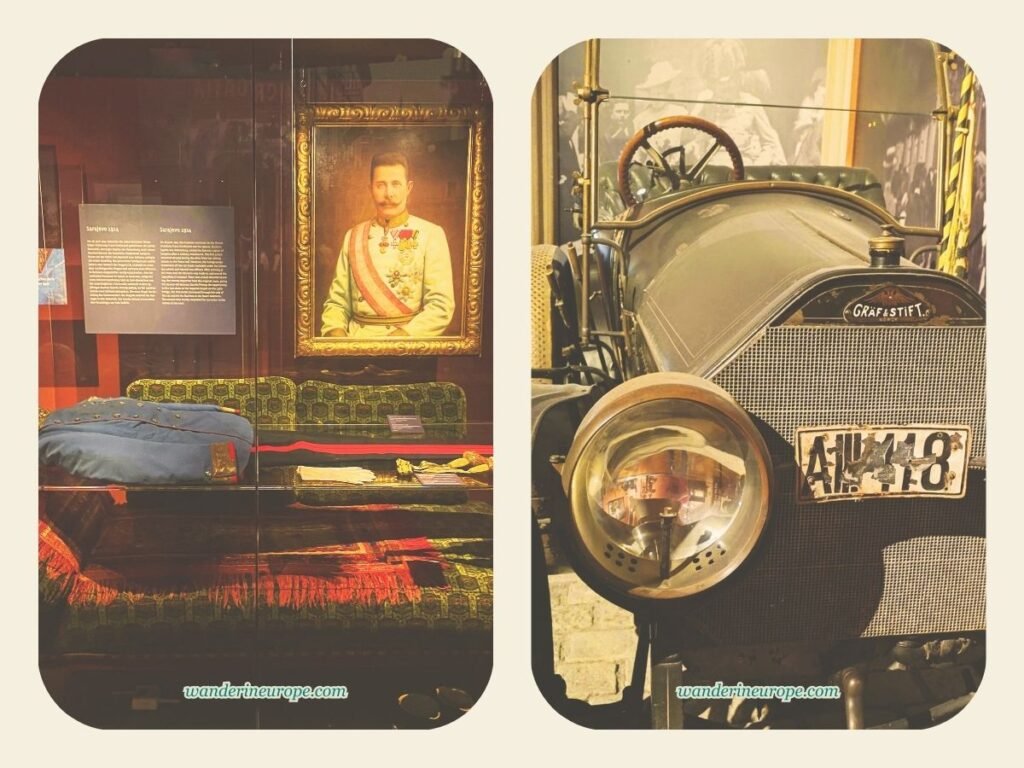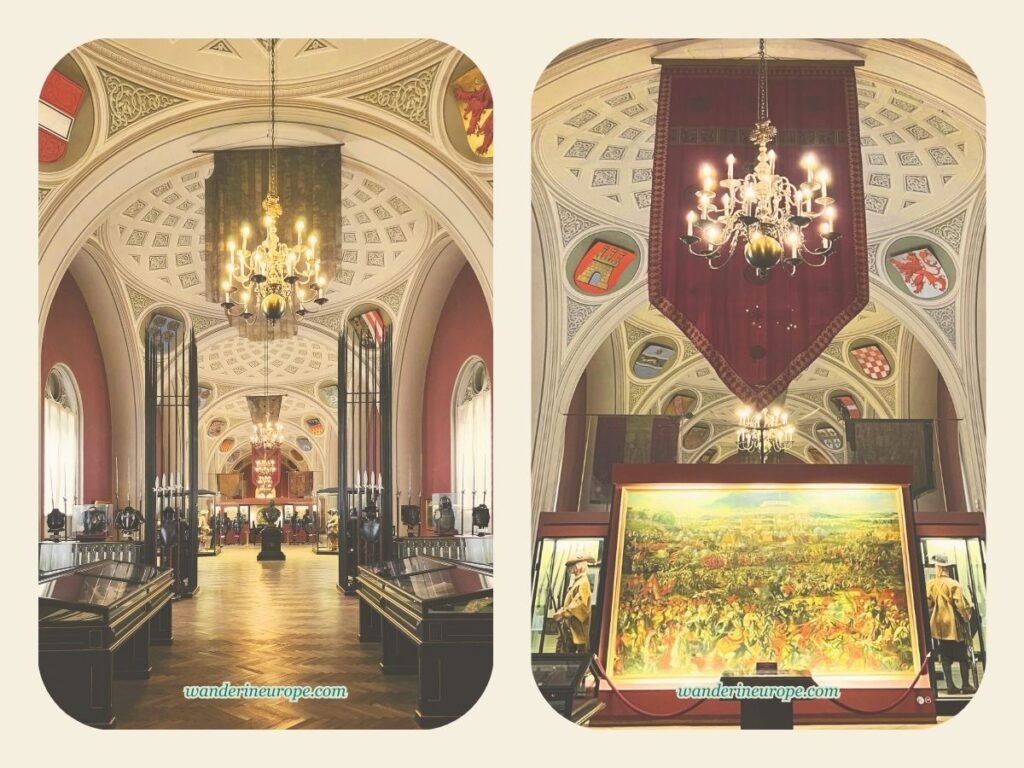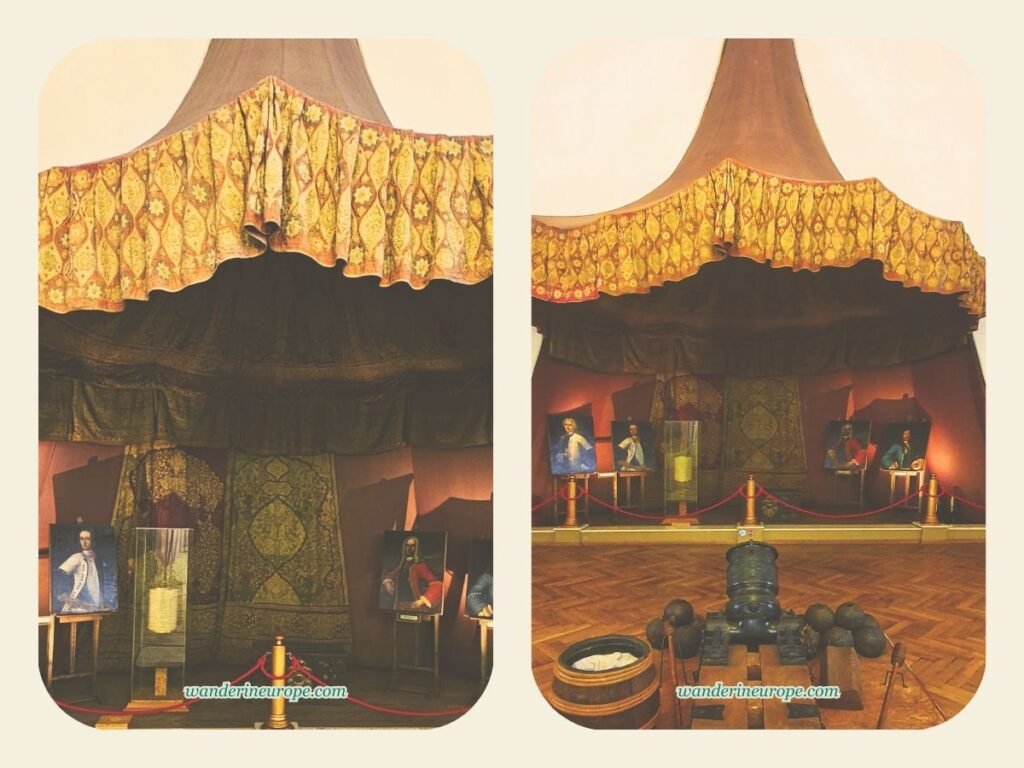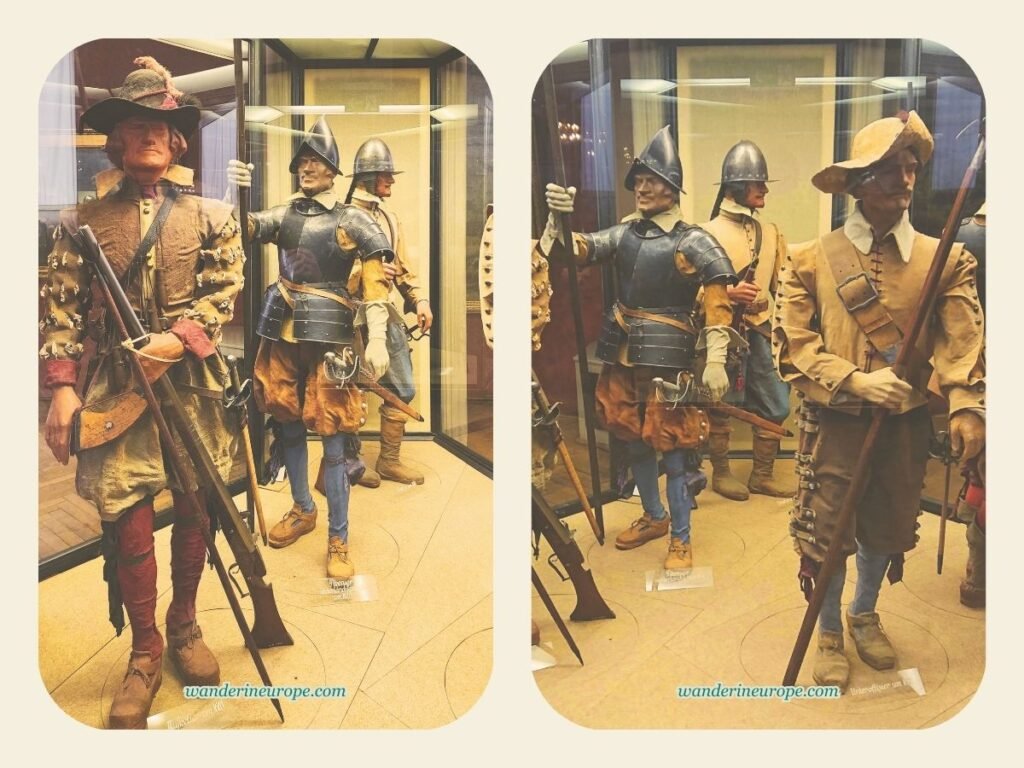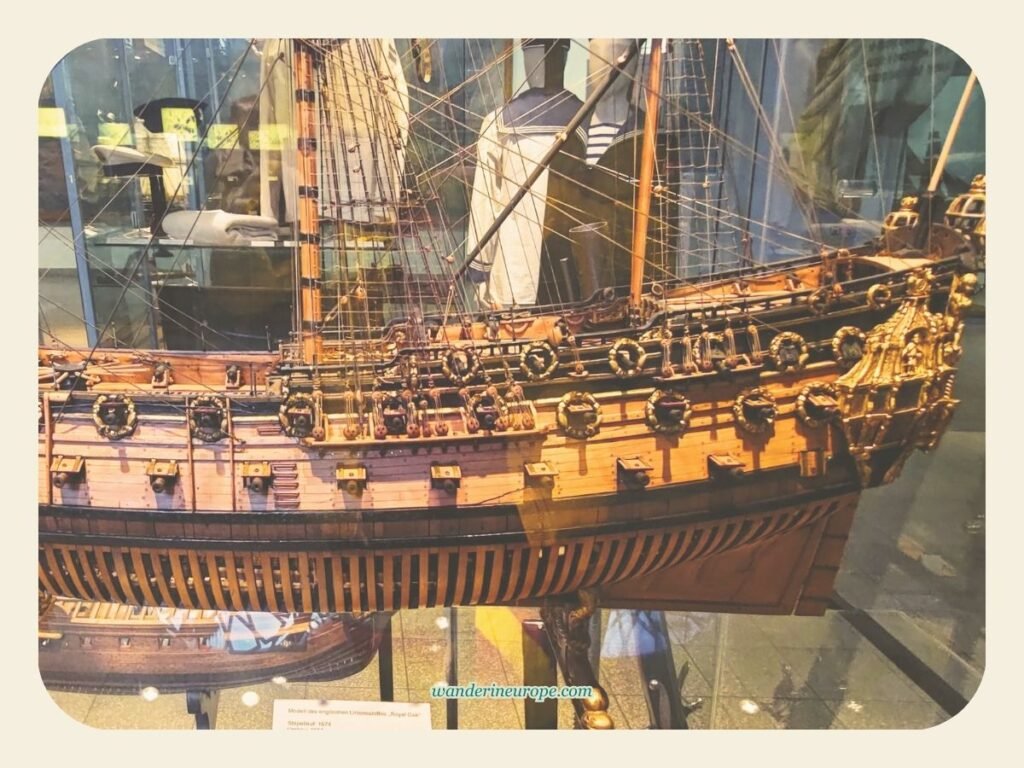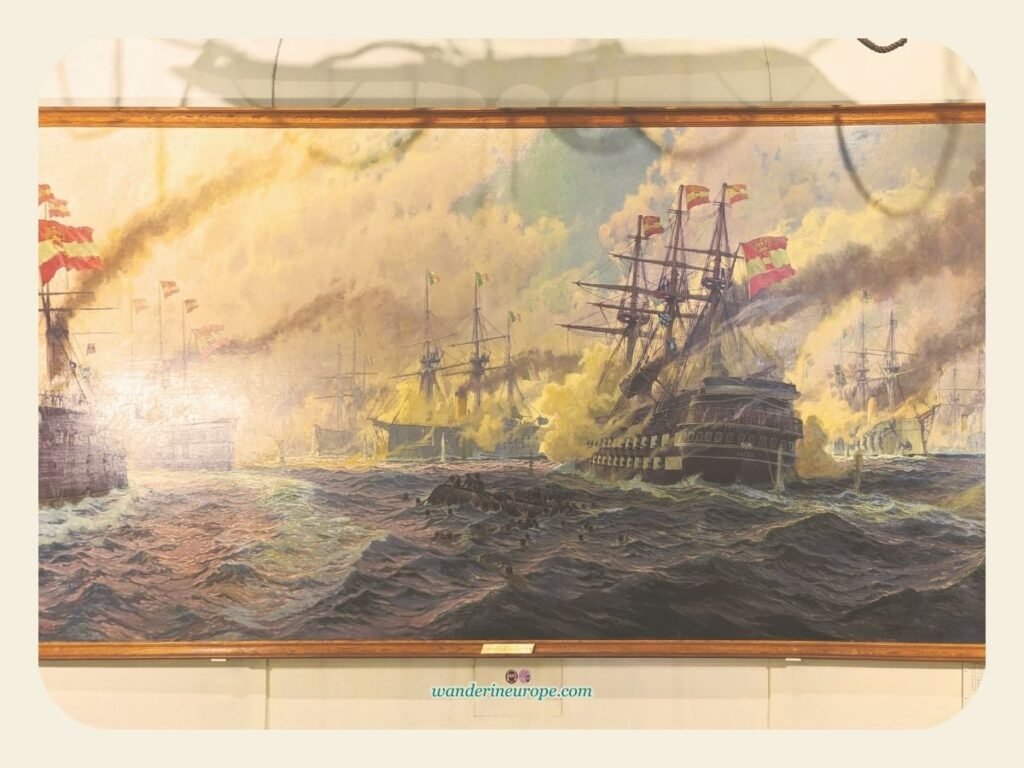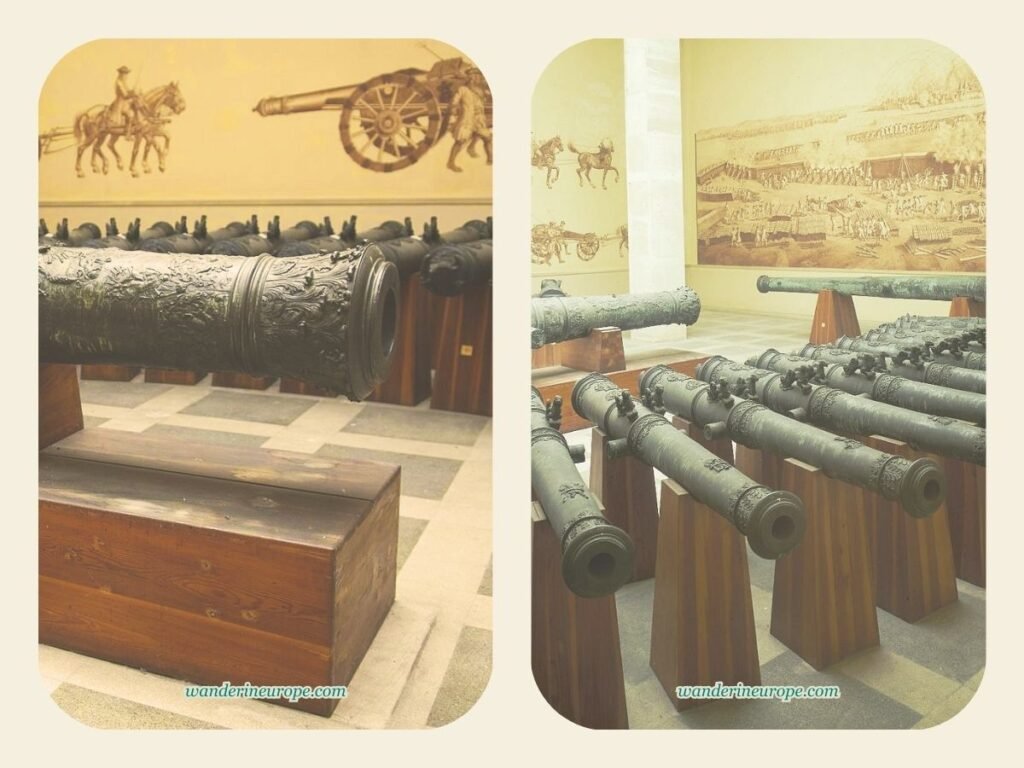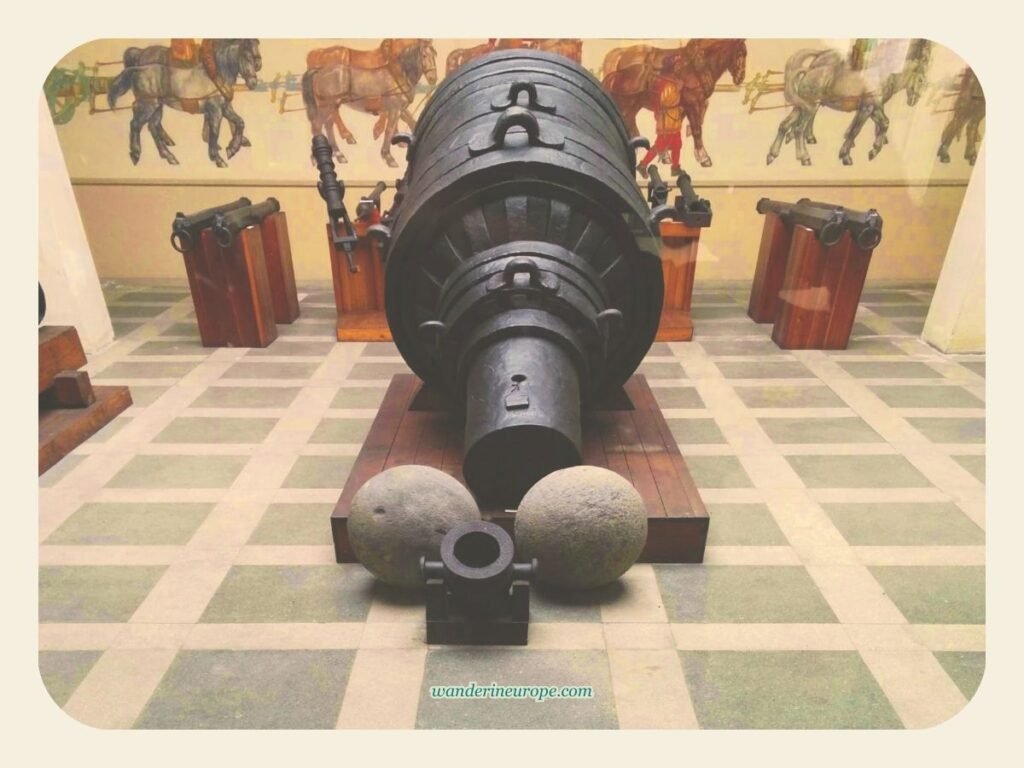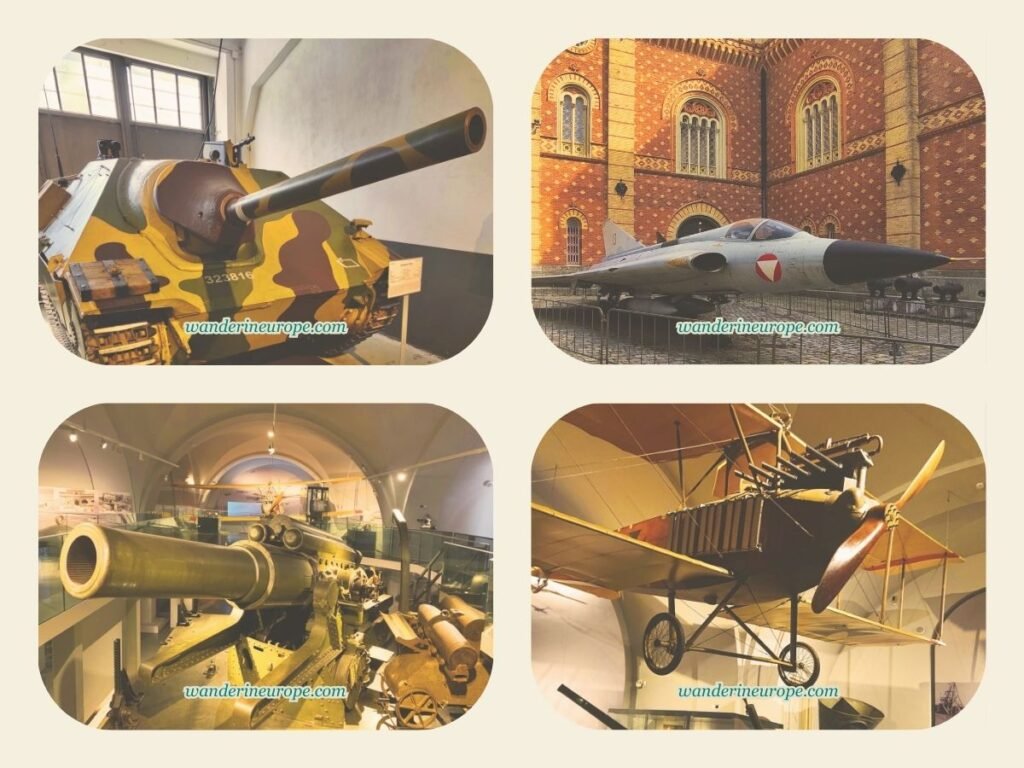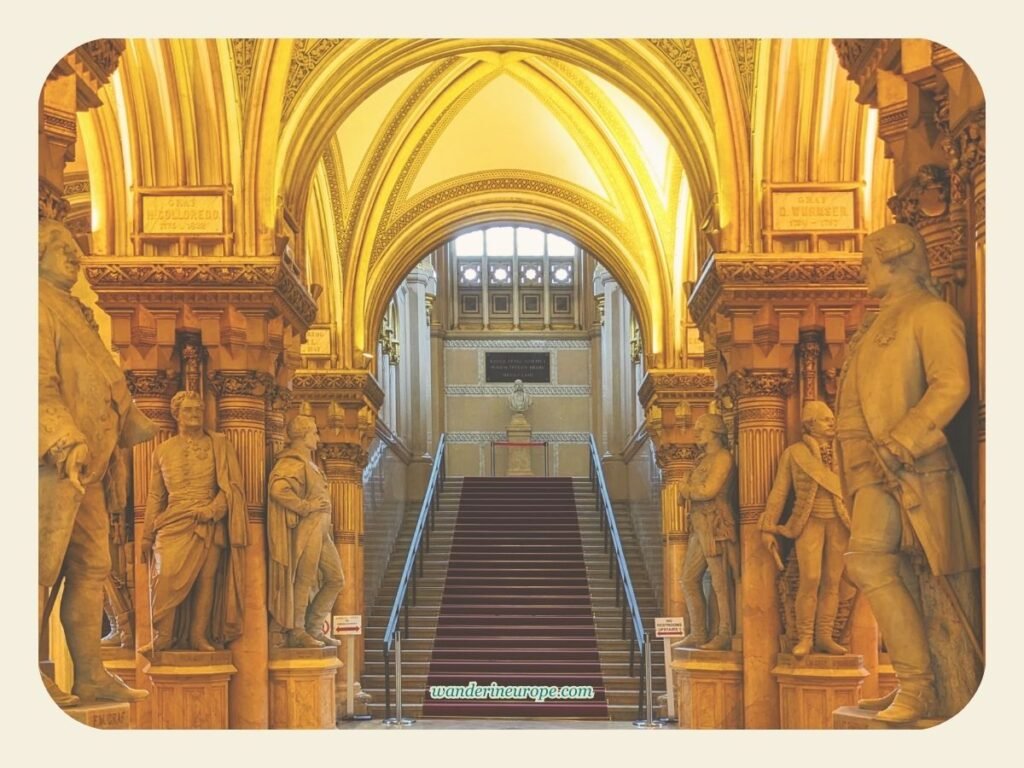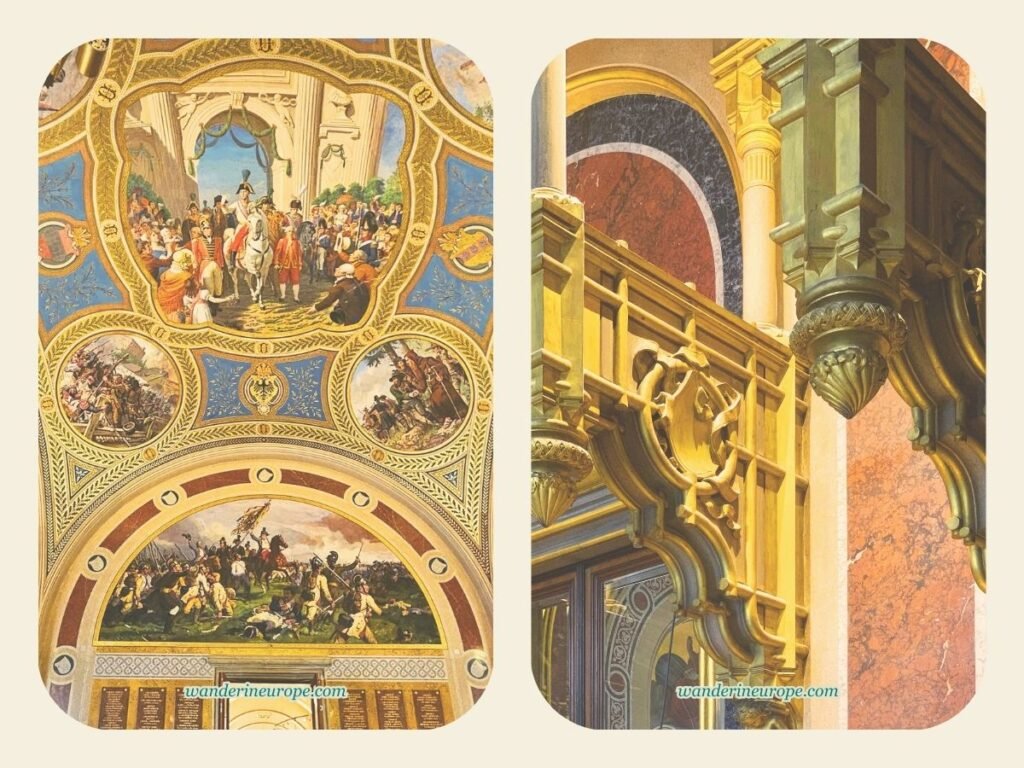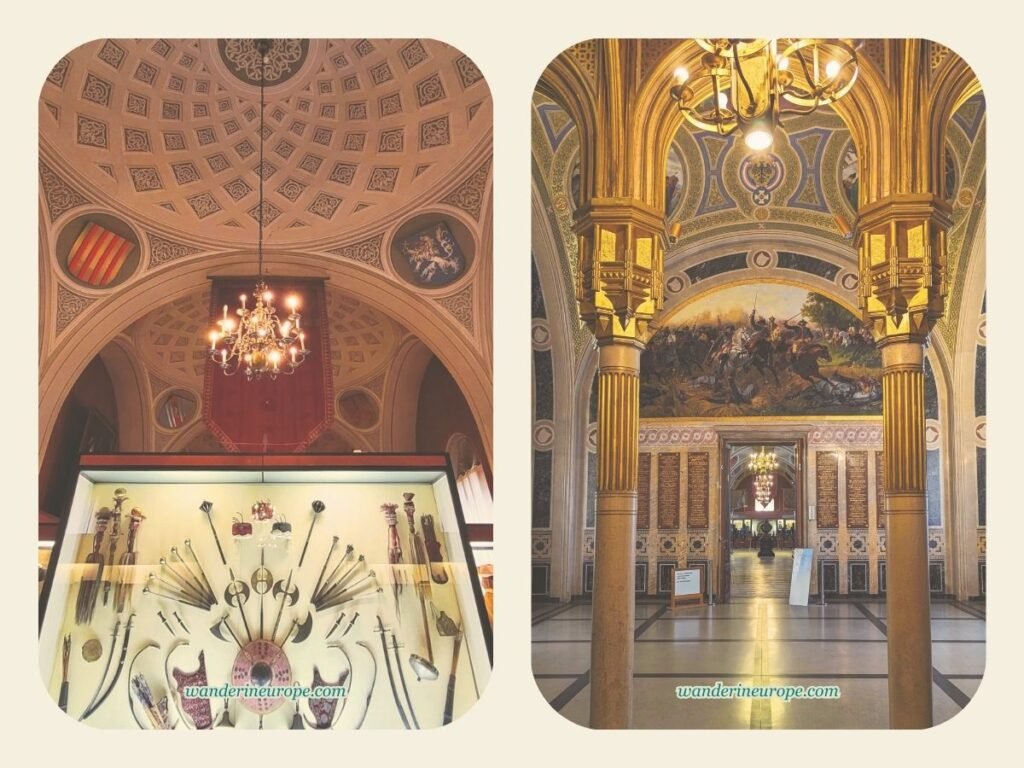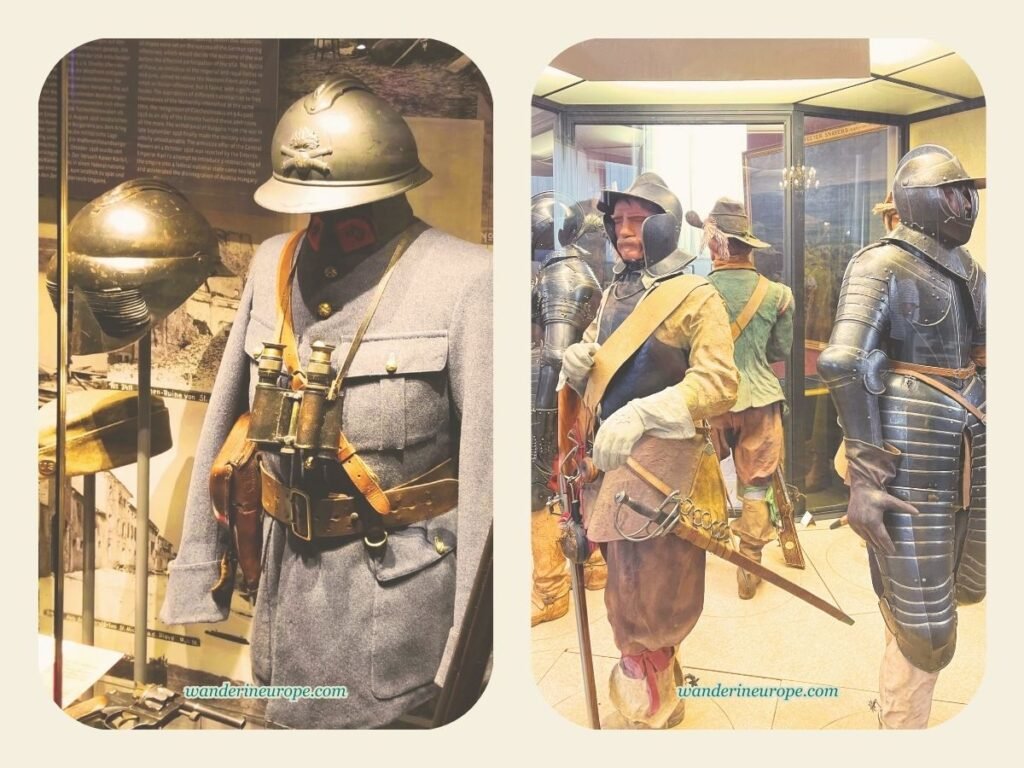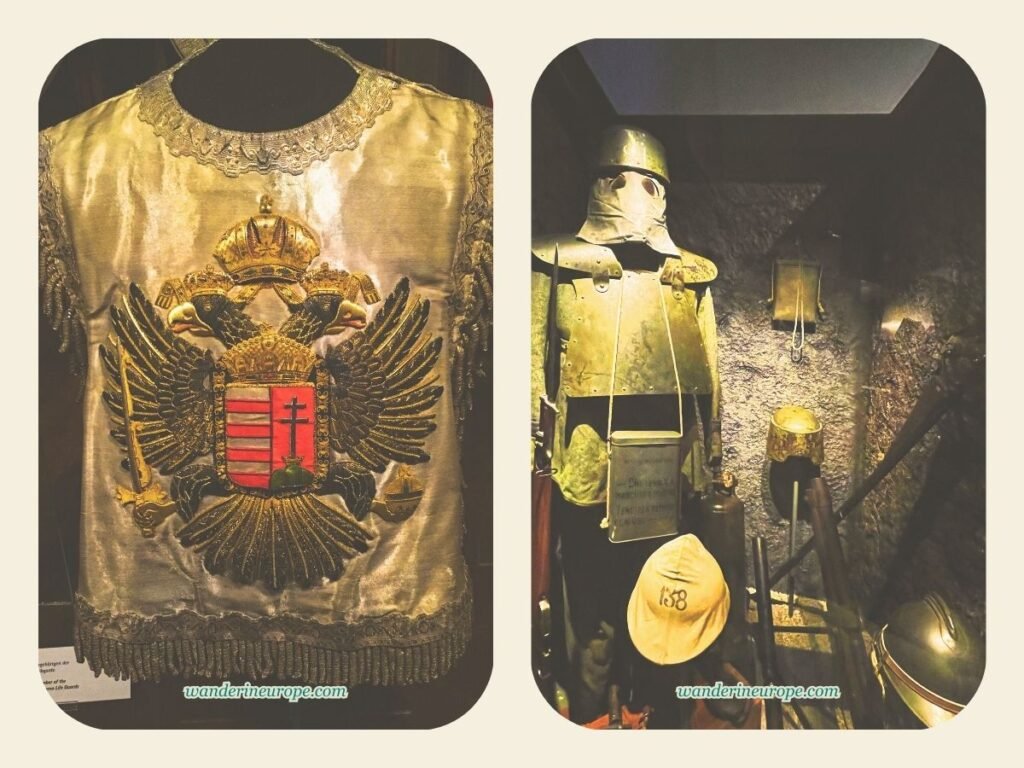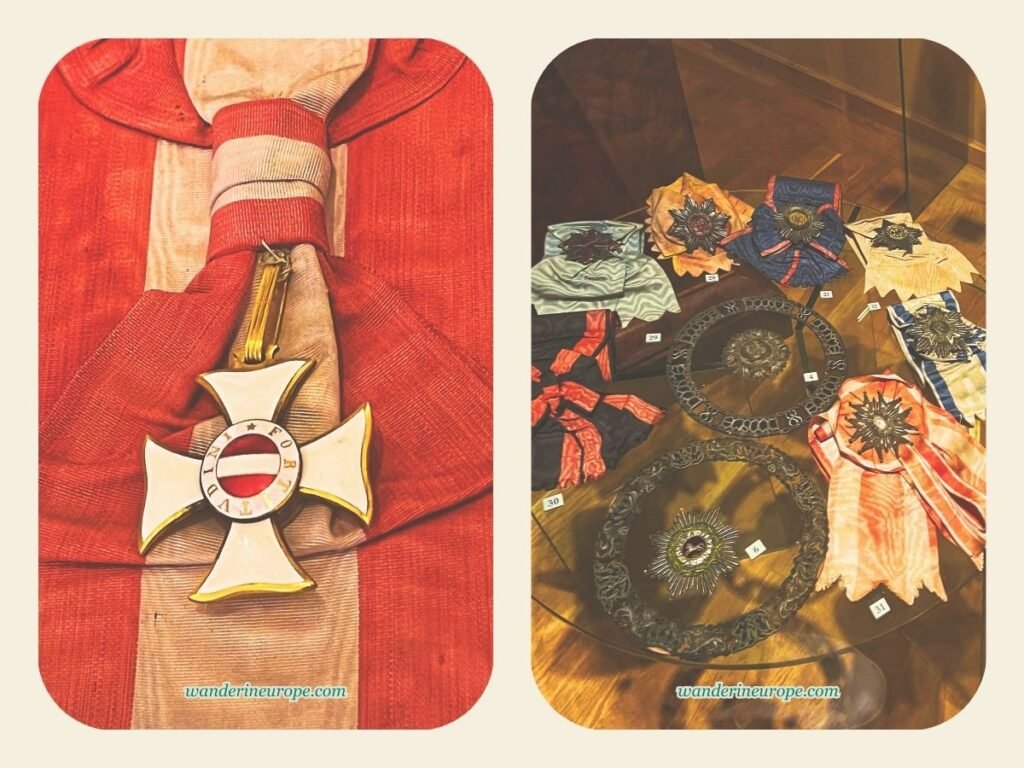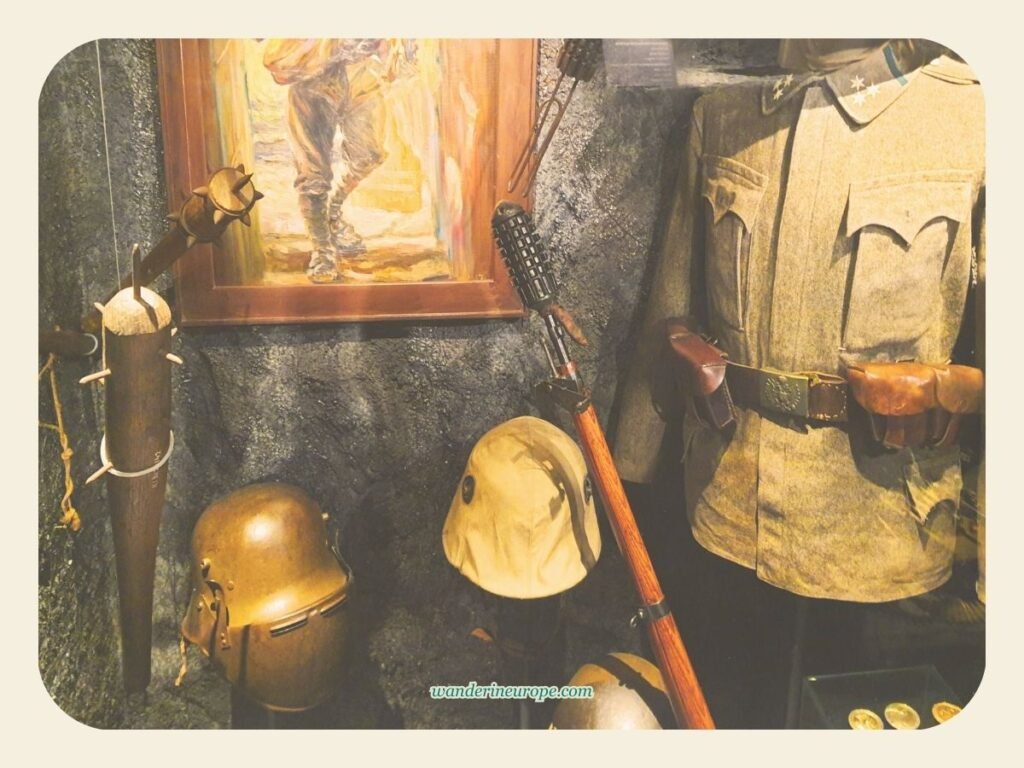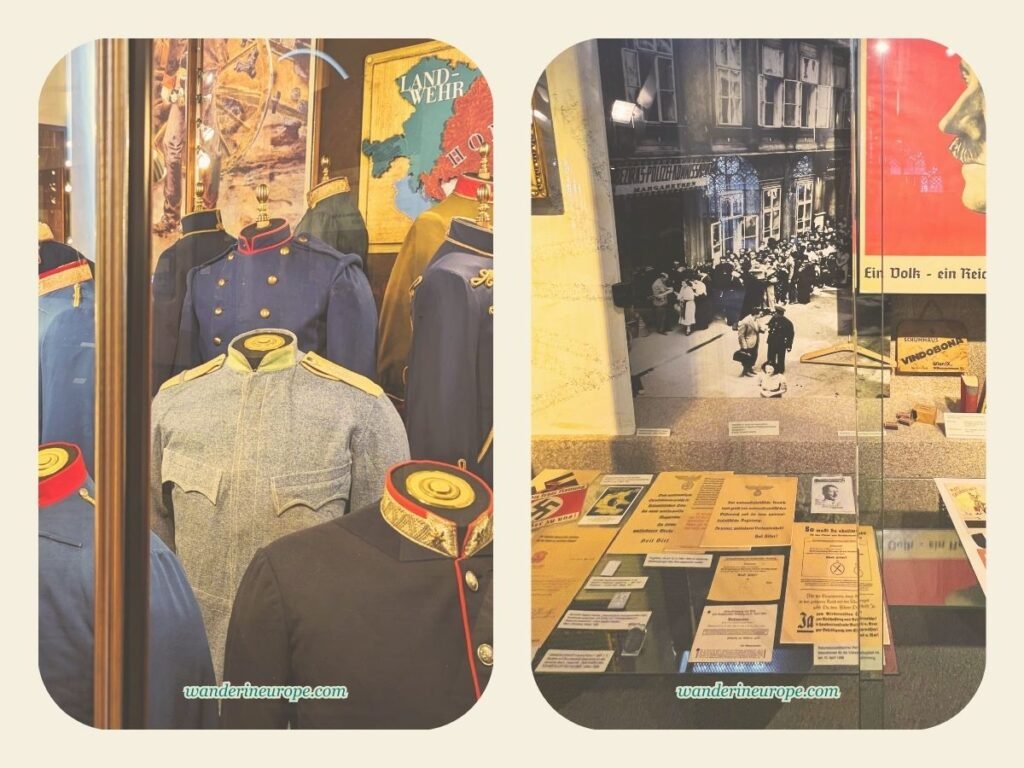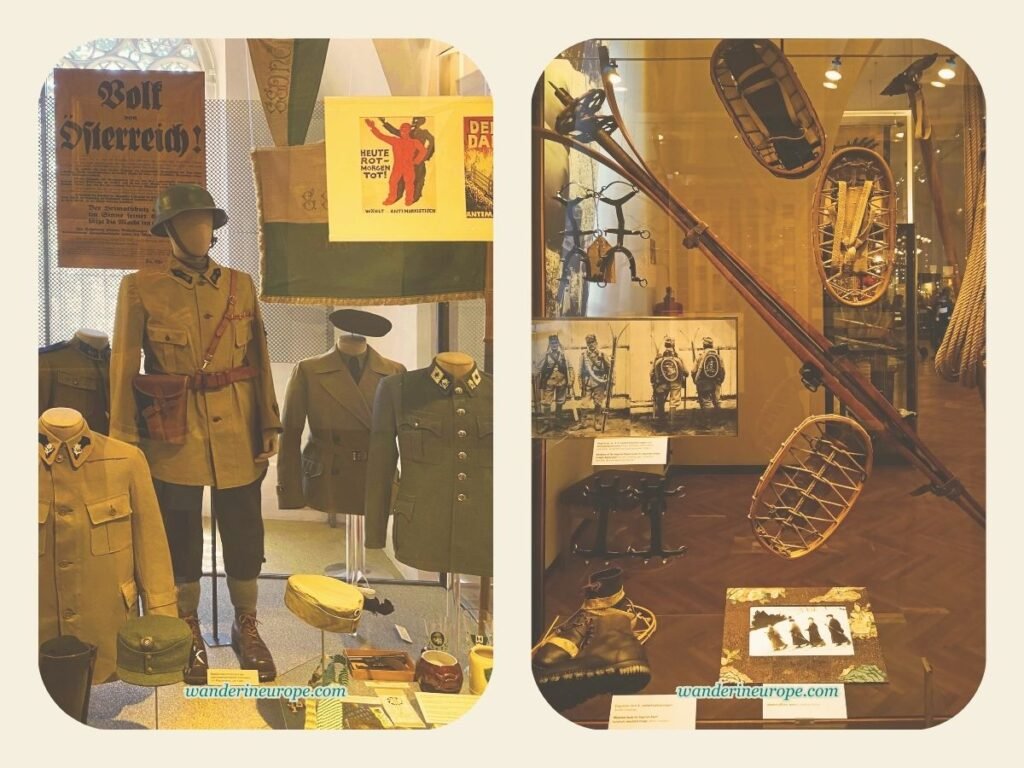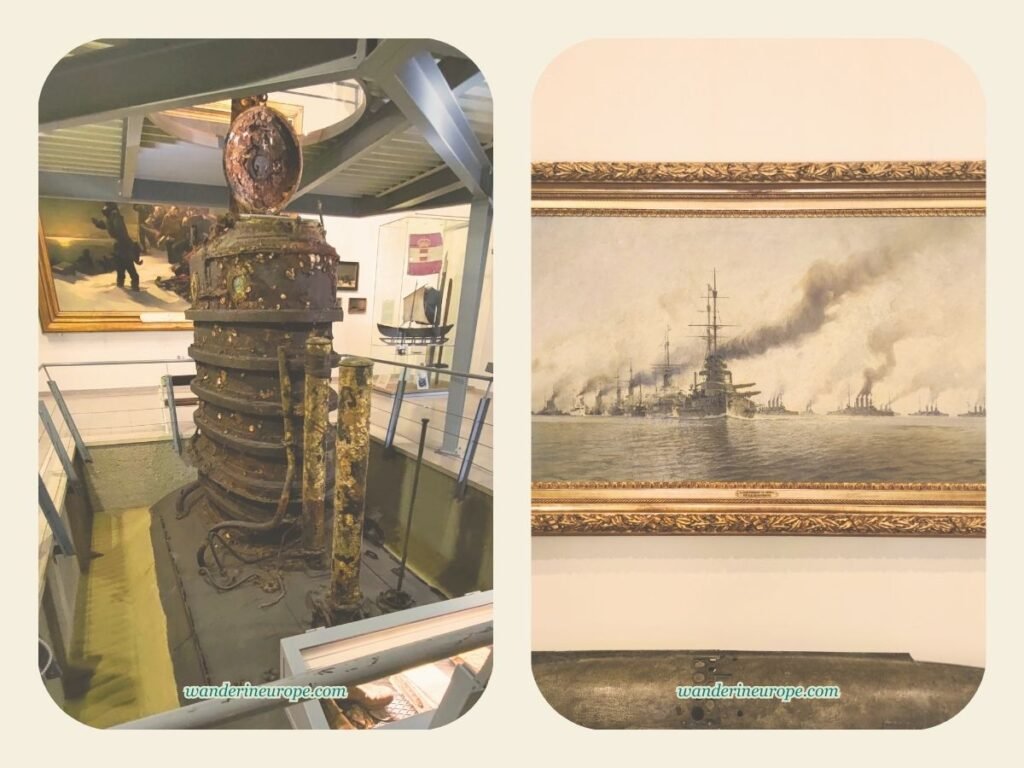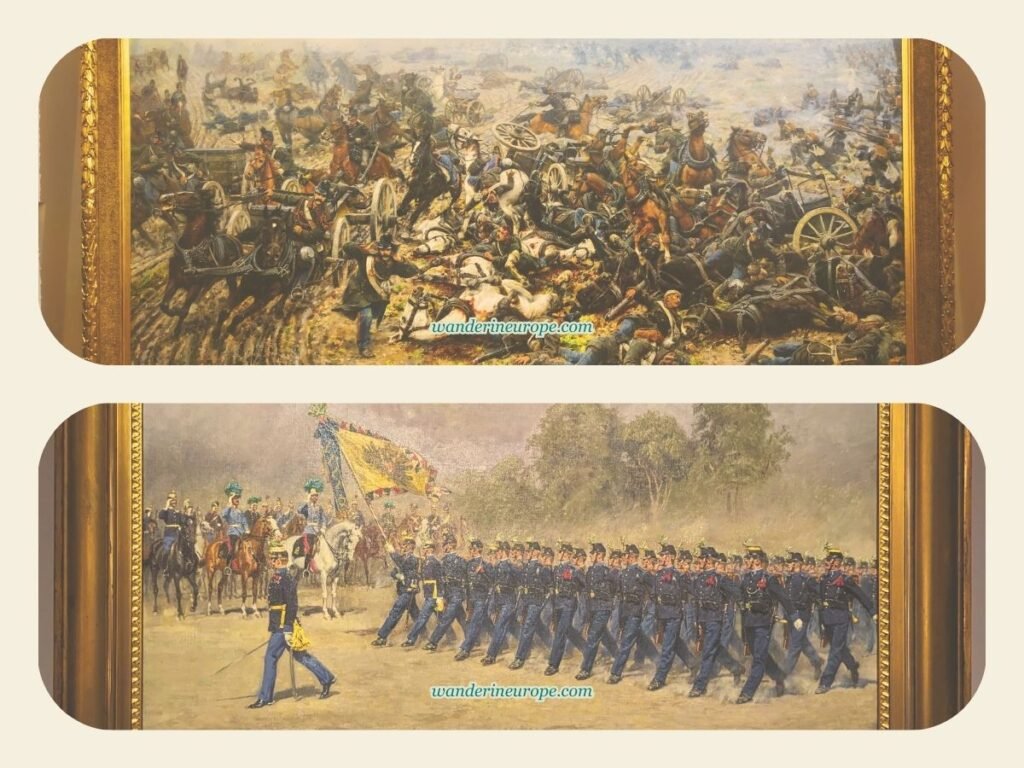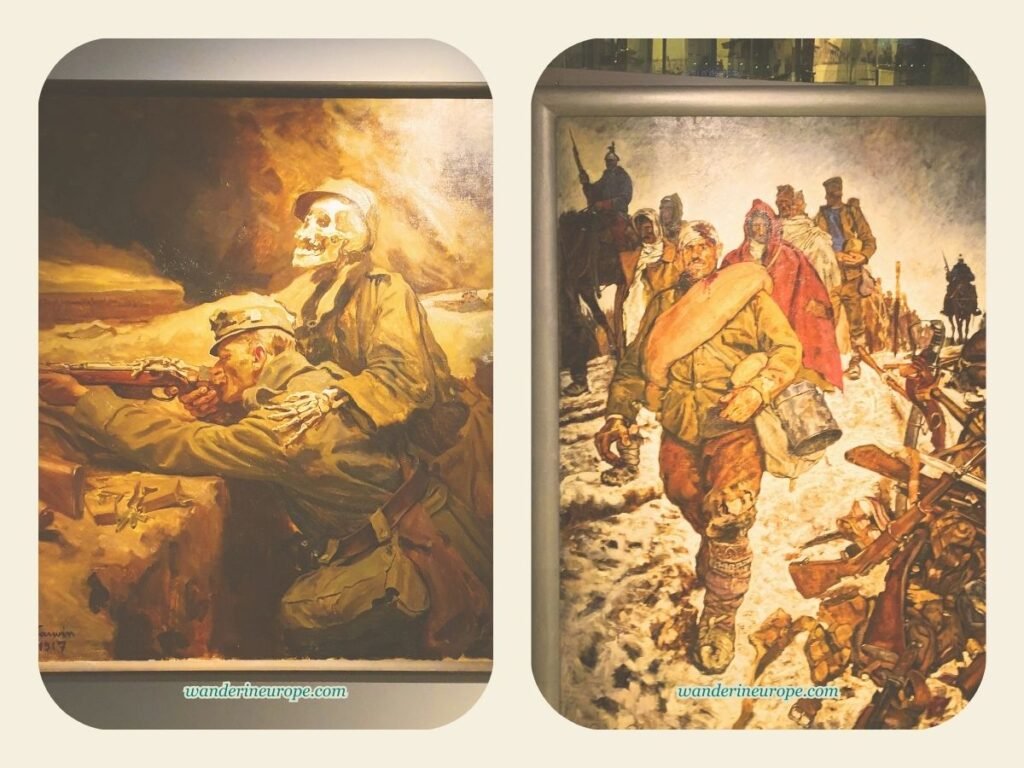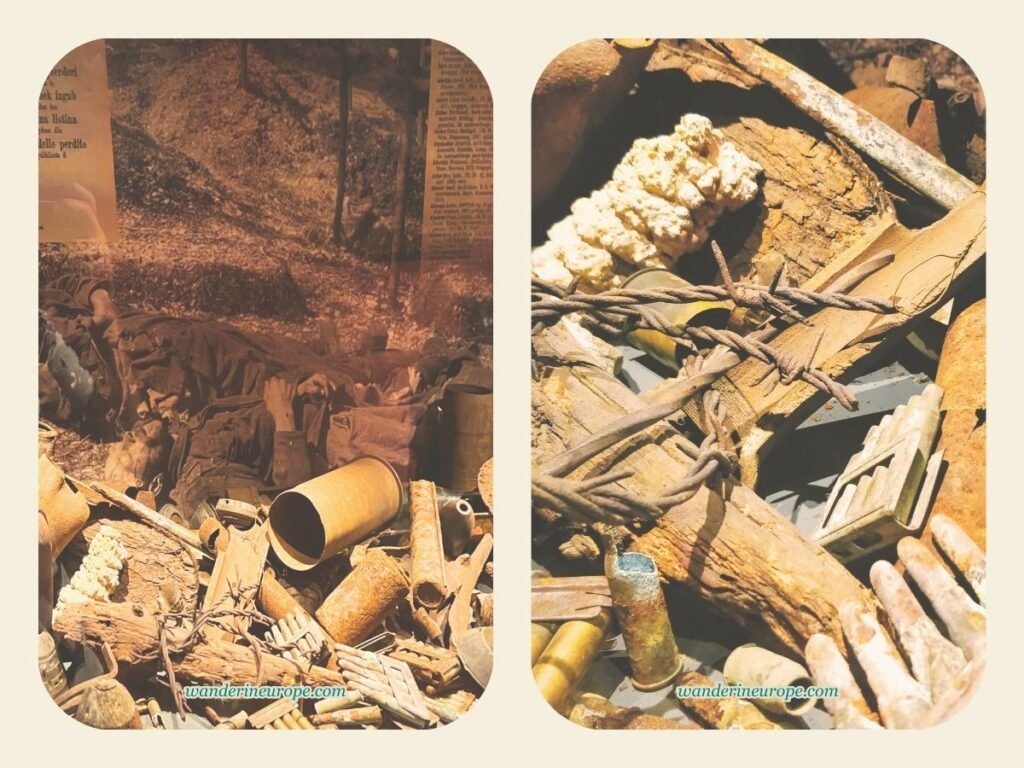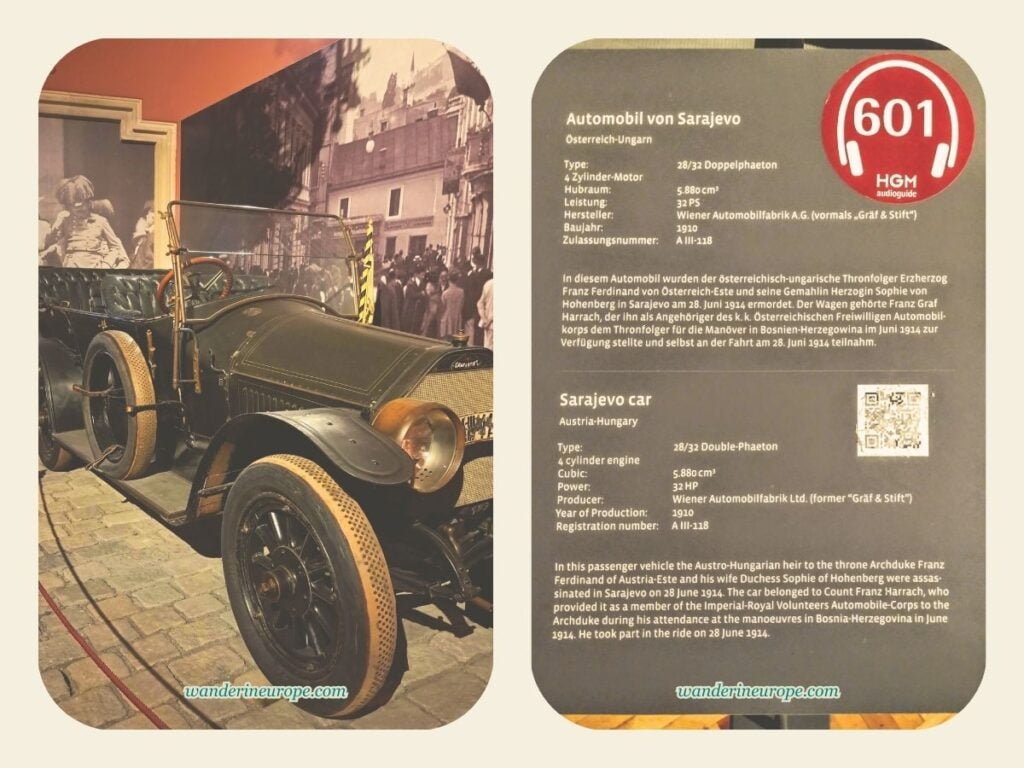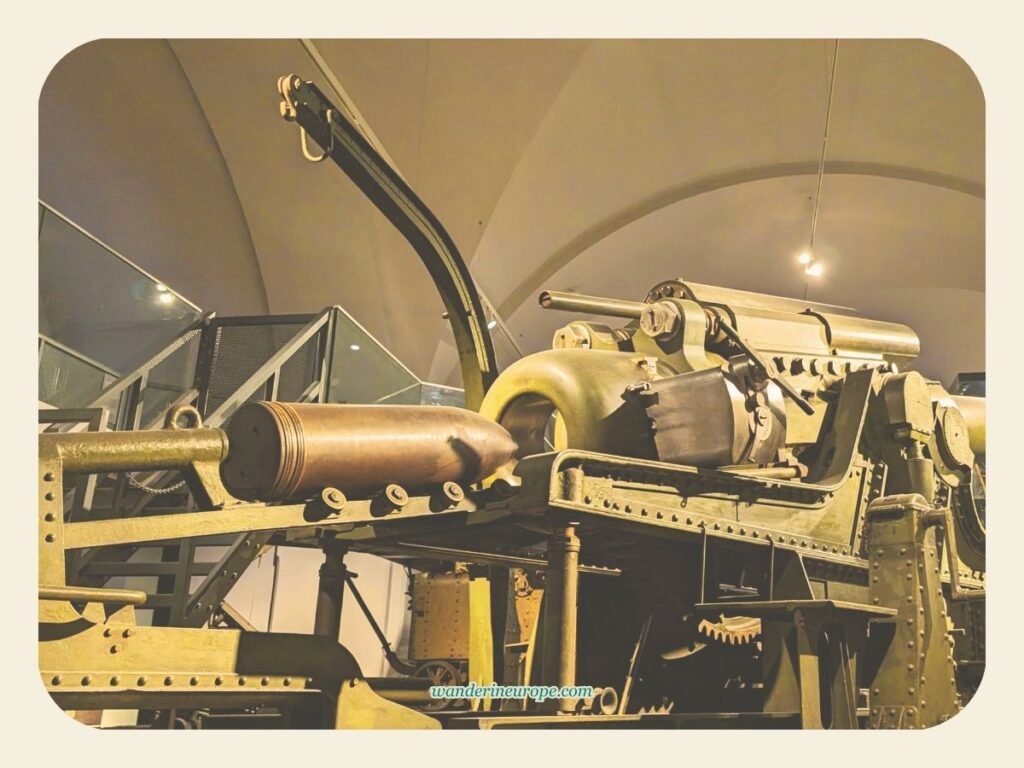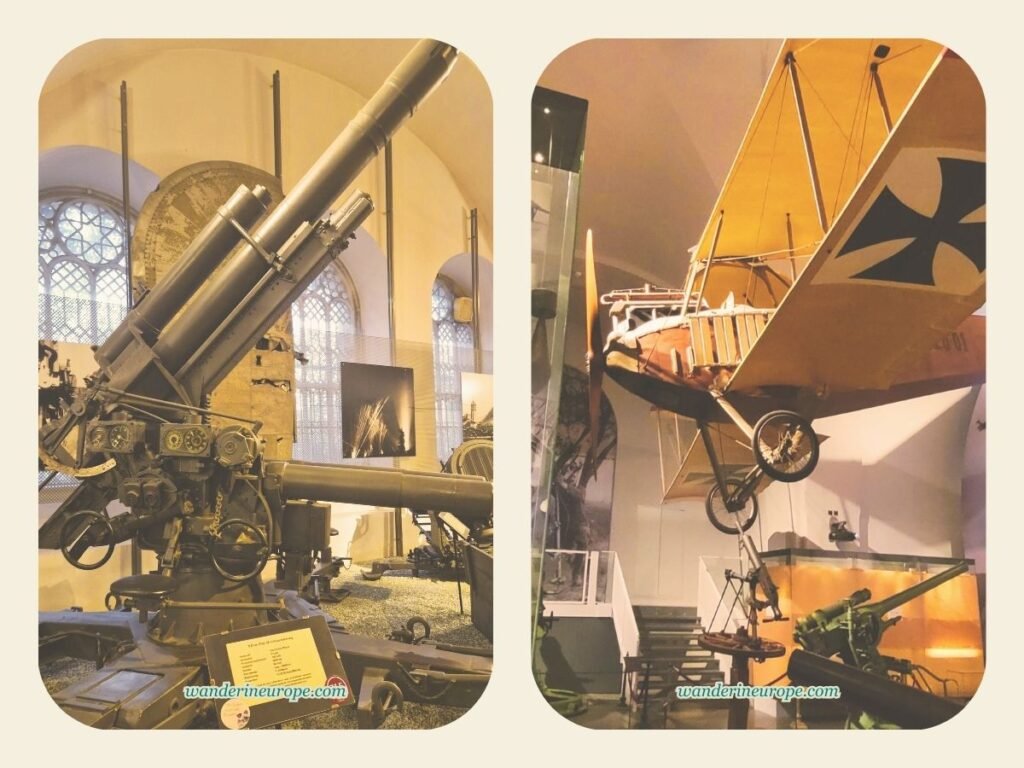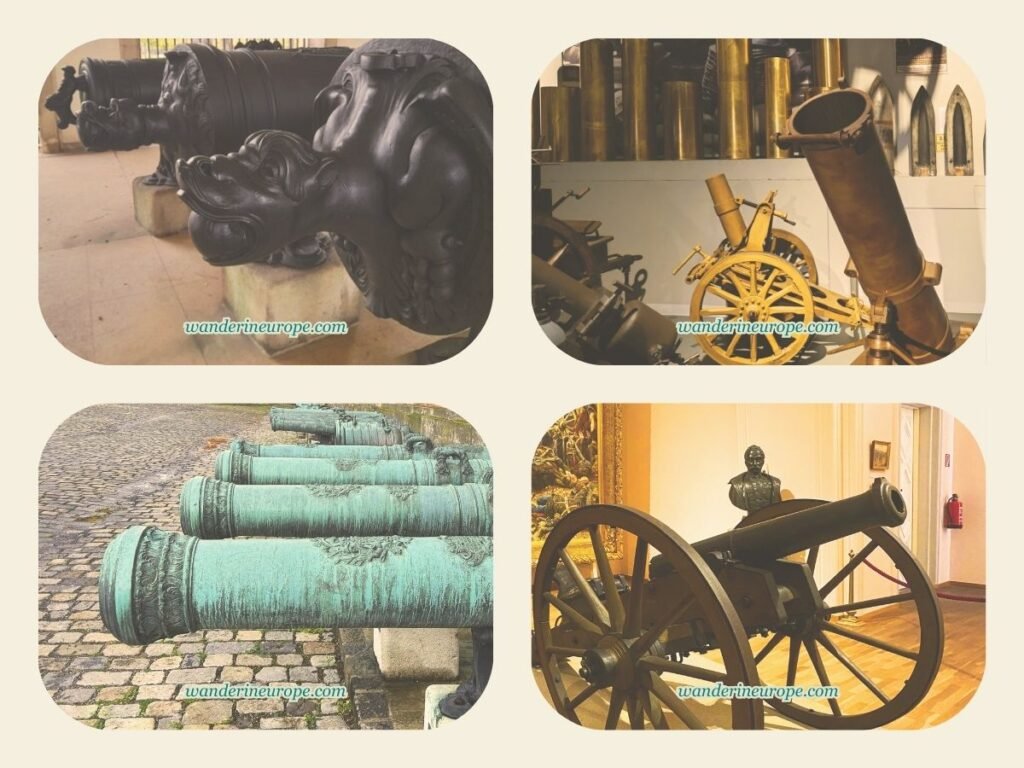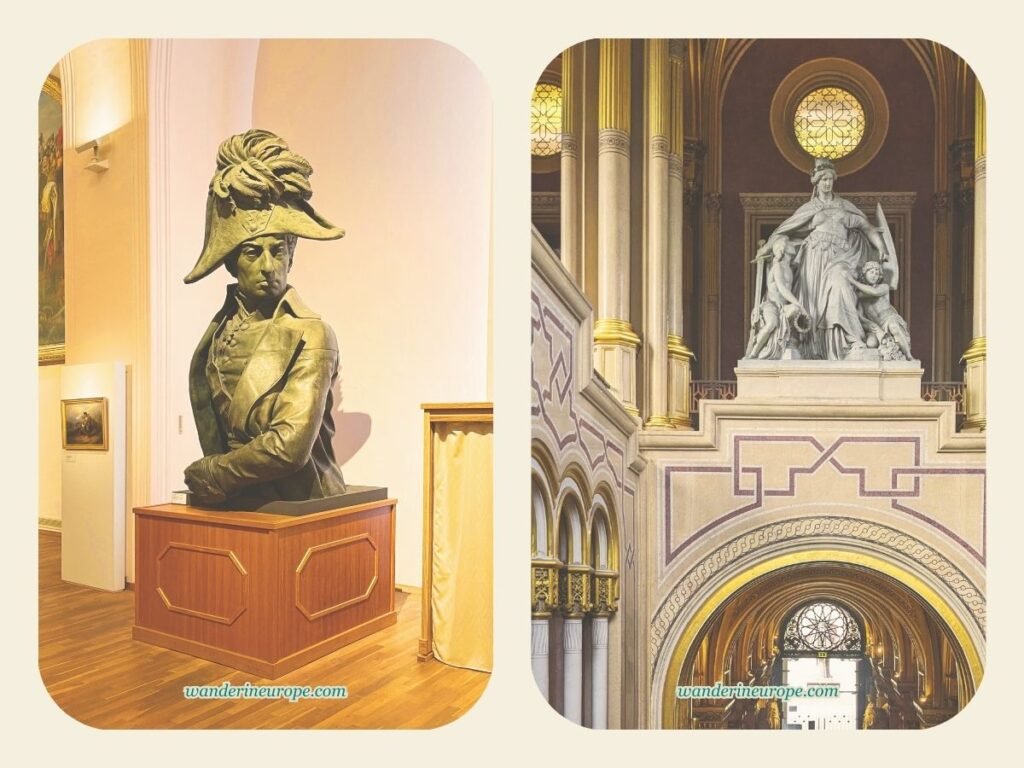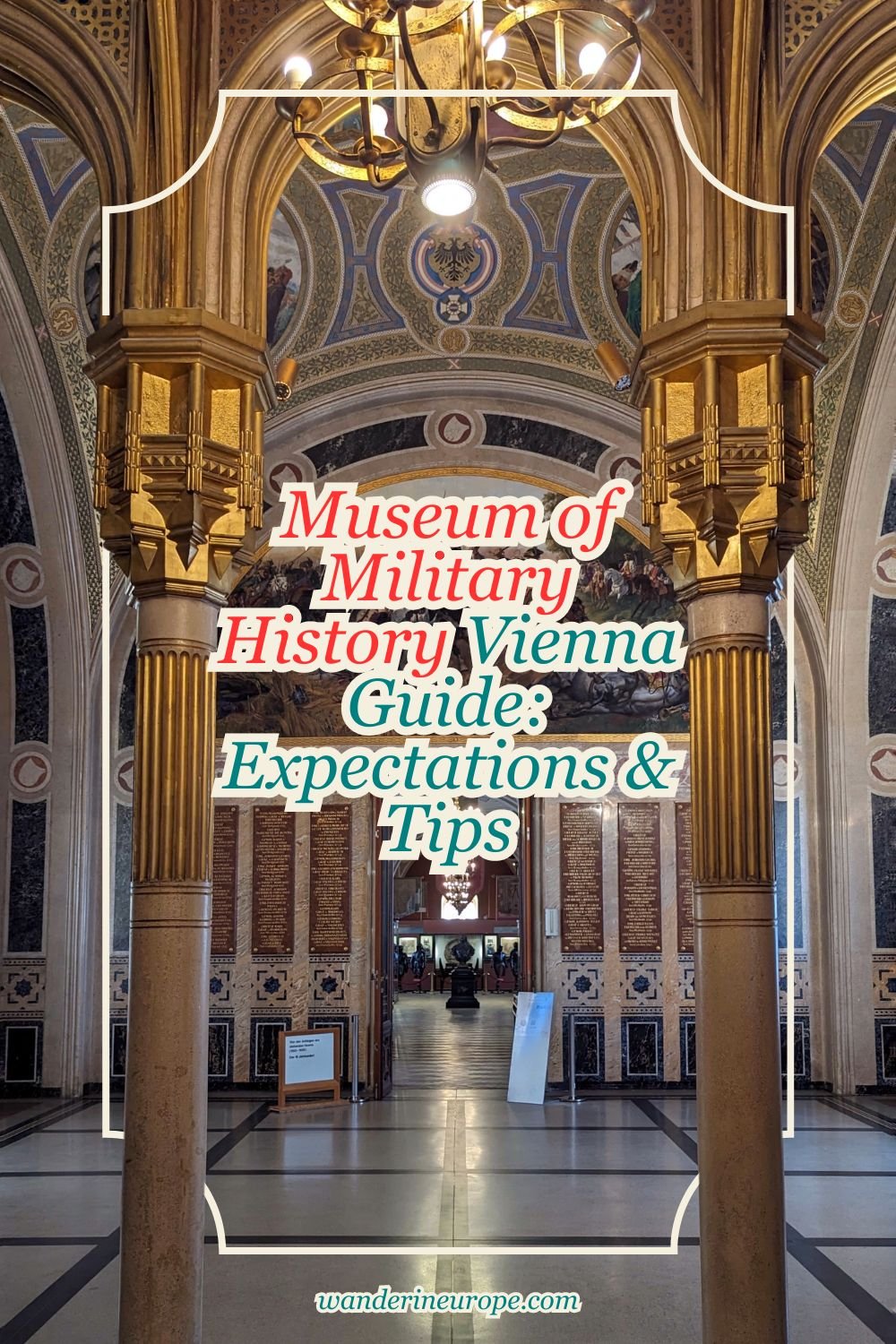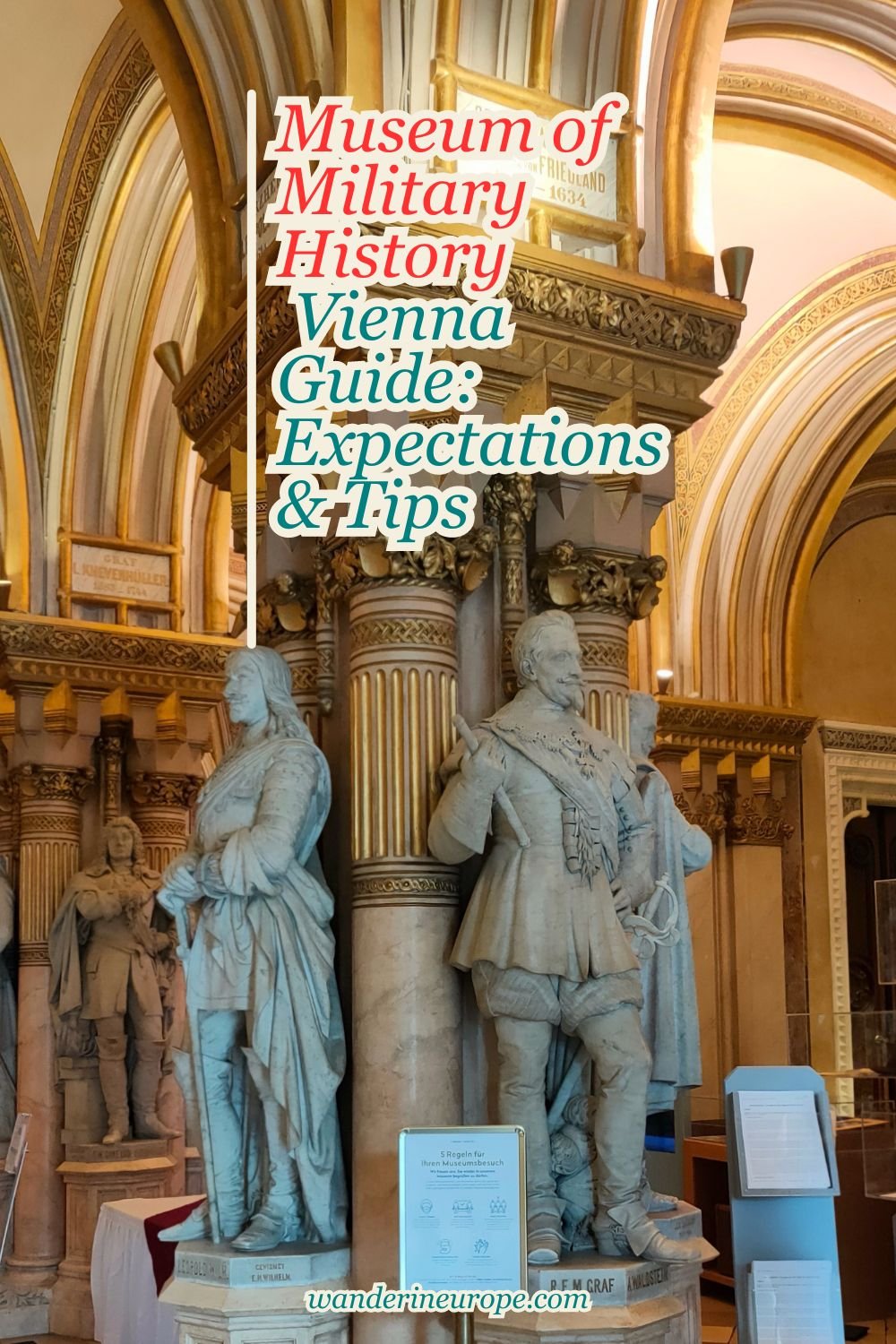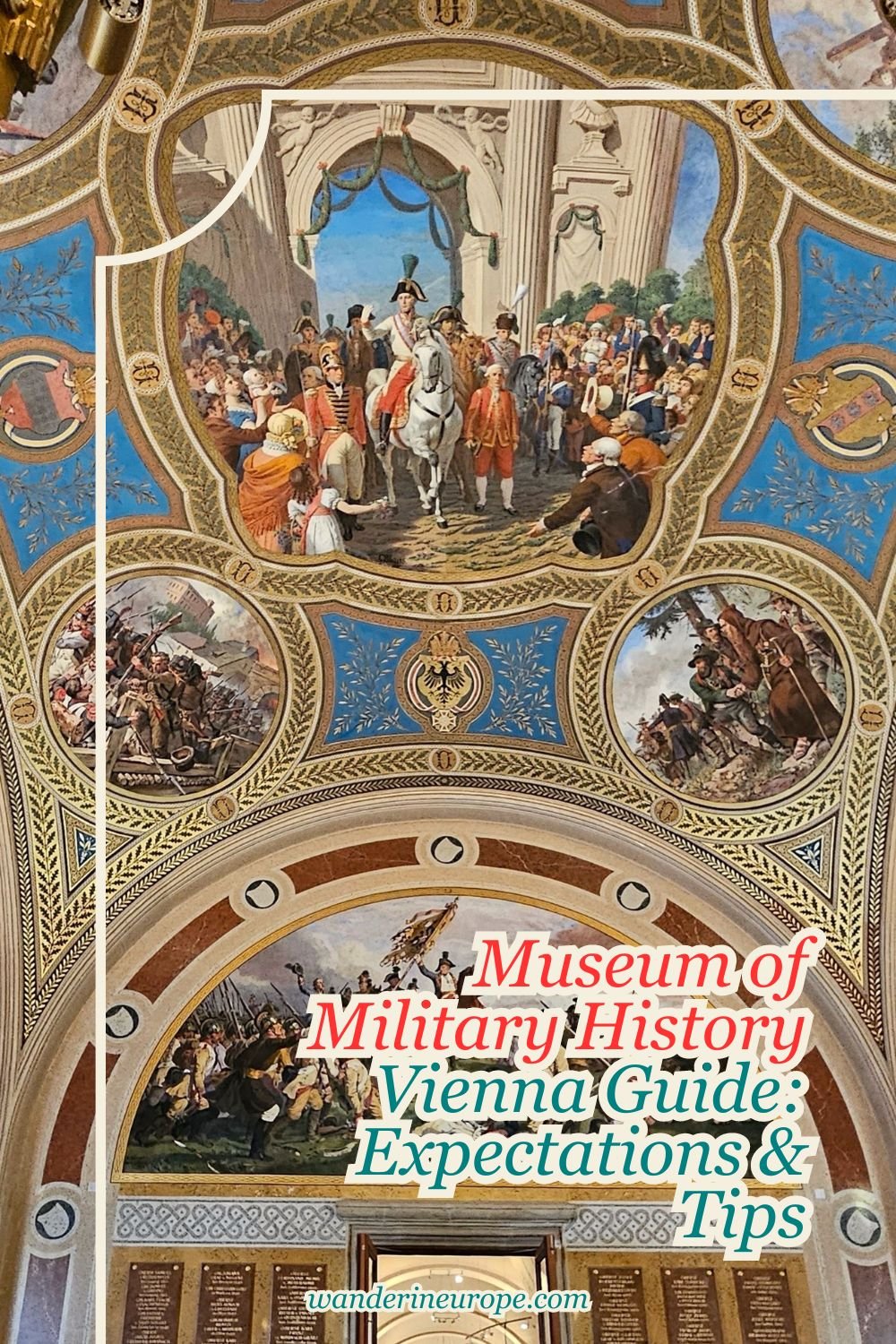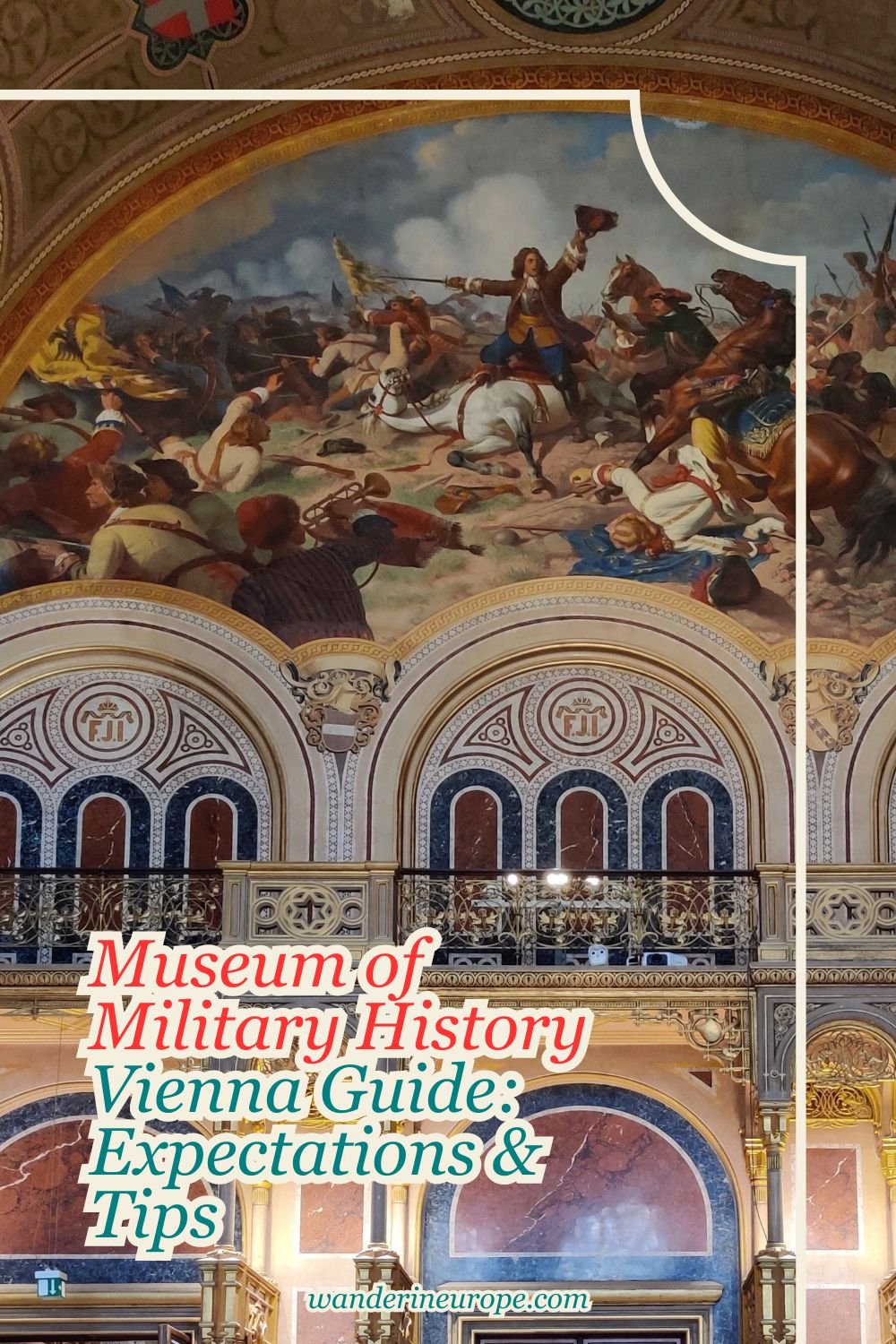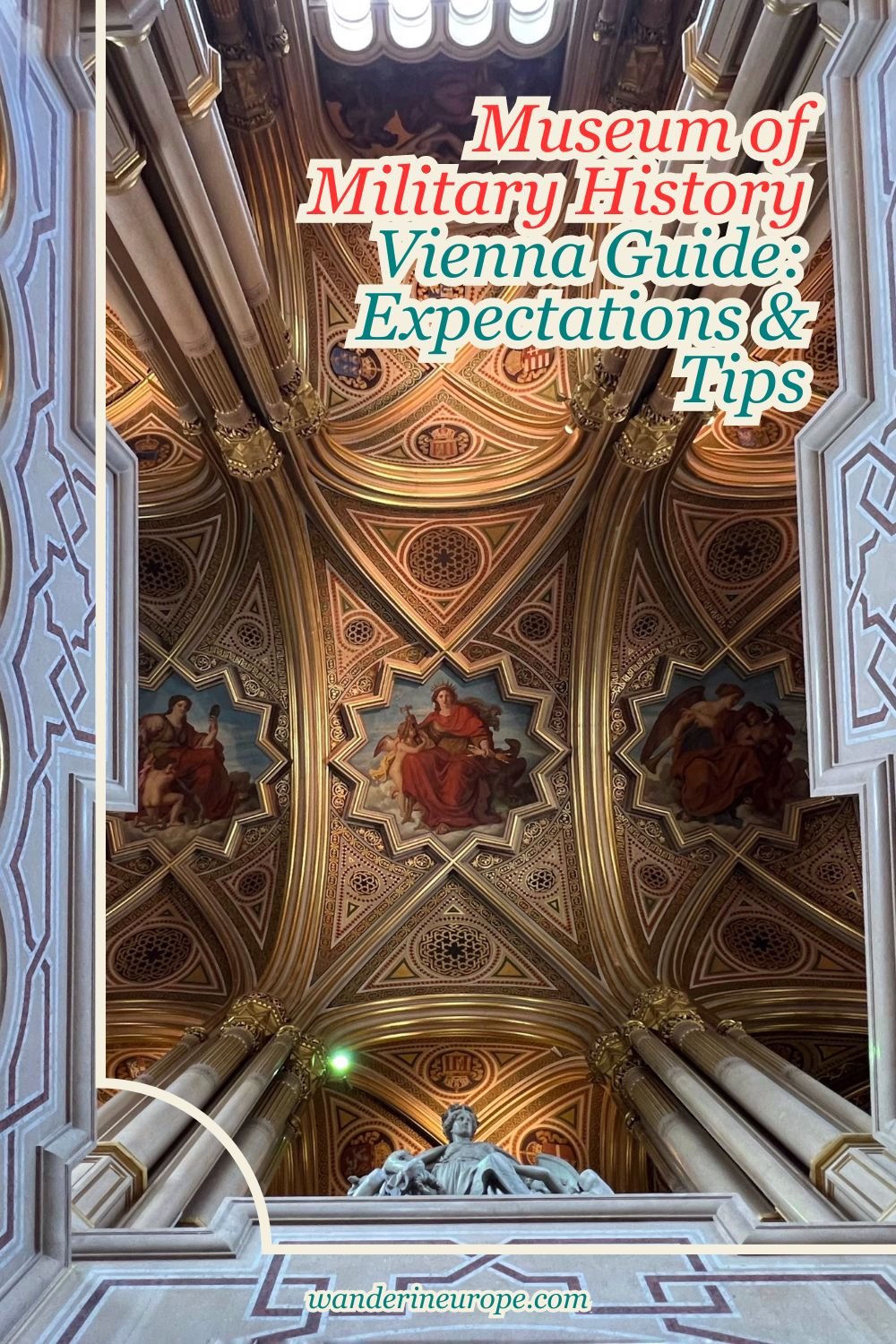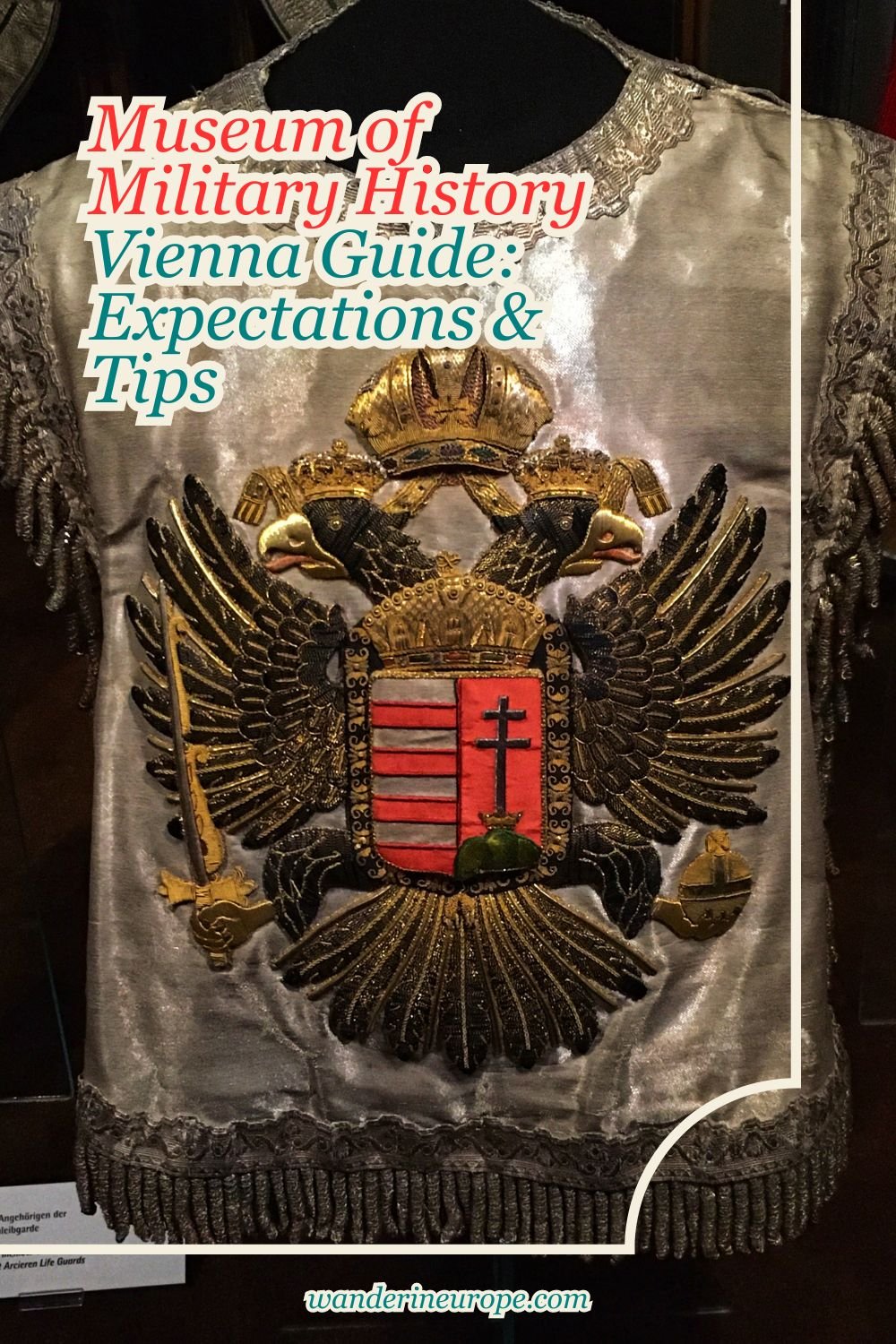Museum of Military History Vienna Guide: Expectations & Tips
WanderInEurope is reader-supported. Affiliate links and ads help us keep creating useful content for you.
The museums in Vienna really exceeded my expectations. In addition to the Kunsthistorisches Museum and the museums within Vienna’s spectacular palaces, such as Hofburg, Schönbrunn, and Belvedere, one that I found particularly fascinating is the Museum of Military History.
The Museum of Military History is a fantastic museum in Vienna, especially for history lovers and travelers like me who used to play or still enjoy Real-Time Strategy games like Rise of Nations, Age of Empires, or Warcraft. As you roam the halls and rooms, you’re surrounded by old maps, tanks, models of battleships, armors, and weapons that span the centuries. It’s an incredible experience!
And the building’s architecture? It’s as much a work of art as the exhibits it contains. With the beautiful symbolic paintings and sculptures of historical figures in the Museum of Military History, you might think of this place as an art museum as well. This museum is indeed a place where one can behold the beauty of Vienna.
Should you decide to visit the Museum of Military History, the interesting things I discovered are written here to guide you in making the most of your visit. You can also find tips and practical information—things you need to know before you go.

A glimpse to the Museum of Military History
Quick find: Amazing Experiences in Vienna Below $100 (opens in a new tab)
Should You Visit the Museum of Military History?
Well, it largely depends on your curiosity about the history, military, warfare, or maybe politics of Europe, specifically the Habsburg or Austro-Hungarian empire. If these subjects intrigue you, the museum’s extensive collection of historical artifacts and military objects of all shapes and sizes will undoubtedly have you delightfully exploring its halls and rooms…
At the same time, I haven’t yet discovered any place with a greater collection of military objects than this Museum of Military History. That’s something to consider!
From another point of view… The Museum of Military History is also worth a visit if you want to look at the history of Austria and most of Europe from a different angle. Essentially, this museum allows you to uncover more about Austria’s history, going beyond the famous Habsburg Family, the impressive legacy of Empress Maria Theresa, or the fascinating life of Empress Sisi.
You can also gain insights into many aspects of life in Europe across hundreds of years, including culture, art, and technology, not only politics and military conflicts.
Spoiler alert: the Museum of Military History also features an exhibit on Empress Maria Theresa. To be honest, I wouldn’t have expected her to be out of the picture, considering she’s one of the most celebrated figures in the Habsburg family.
If you’re visiting Vienna for the first time or have a tight schedule, I’d suggest exploring other notable sites in the city before this one. Let me explain further. While…
- Taking a peek into the realities of warfare, from the Middle Ages to World War II, I must say, an exceptional experience;
- Getting a deep understanding of the causes and consequences of war, which, in my view, can further strengthen our values in life;
- Seeing objects (the vehicle in which Archduke Franz Ferdinand was assassinated, an event that led to the outbreak of World War I) that bear witness to key global events can be found in the Museum of Military History is a privilege;
… there are other experiences in Vienna that might provide you a far more memorable travel experience for you.
If you’re interested in uncovering very important historical treasures and inspiring works of art, the palaces and museums I mentioned earlier are your best bet. They’re the highlights of Vienna. For more breathtaking architecture, see the spectacular churches in the city, such as Karlskirche, Peterskirche, and of course, Stephansdom. And don’t forget about the stunning view of Vienna from the top of Danube Tower.
Vienna Pass includes a free entry to the Museum of Military History. Visiting this museum is a way to maximize this special pass.
The Museum is a Unique Experience
A visit to the Museum of Military History can add a unique touch to anyone’s Vienna trip, setting it apart from the typical tourist experience.
How can the Museum of Military History make your Vienna trip unique? Everything in this museum!
The first part is the museum building itself. As a traveler with a keen interest in architecture, I can’t stress enough how extraordinary the museum building is. To my knowledge, there’s nothing quite like it in Austria or even Europe — a military history museum housed within an architectural wonder.
Constructed from bricks, the building is a harmonious fusion of Moorish-Byzantine and neo-Gothic architectural styles. Its design embodies elements of historicism and romanticism, evident in the building’s features and the artworks that adorn its various sections. I’m particularly drawn to the merlons and crenelations crowning the structure, which lend it a castle-like feel.
The museum building is not just an architectural marvel, but also a symbolic and historical landmark. It’s the centerpiece of Vienna’s Arsenal, a massive former military complex and the largest project undertaken by Franz Joseph I in the wake of the 1848 to 1849 revolution.
A stroll around the museum building reveals symbolic details such as the allegorical representations of Military virtues—sculptures brought to life by the era’s most influential sculptors. You’ll find sculptures symbolizing wisdom, vigilance, bravery, self-sacrifice, military intelligence, and more.
The Museum’s Notable Parts & Exhibits
The second thing that very much sets the Museum of Military History apart from other points of interest in Vienna is the one you can have inside it.
- First is the interiors’ magnificent historical architecture.
- Second, and most importantly, the artifacts that shed light on 400+ years of military activities, advancements, and events that unfolded under the Habsburg Monarchy and beyond.
There’s so much to be fascinated by!
The Museum of Military History has two floors, made up of 8 halls where the exhibits are grouped together based on the period they were used. The halls and exhibits are arranged chronologically, giving you the sensation of time-traveling back to the 16th century and then journeying back to the present, encompassing notable events such as:
- The Thirty Years’ War
- Spanish War of Succession
- The era of Field Marshal Radetzky
- World War I
- and World War II
It’s a comprehensive exhibition.
After you’ve taken in the hall, you can continue your journey to the Tank Garden. Here, you’ll find an impressive display of the Austrian Armed Forces’ key combat vehicles, dating from 1955 to the present. And in the Artillery Hall, you’ll discover that even cannons can be seen as works of art. This collection is among the most significant of its kind in the world!
Here are the most interesting things I discovered in the museum.
More Tips
- In total, four sections of the Arsenal house exhibits of the Museum of Military History: two artillery halls, the main museum building, and the tank hall. The exhibits are well-organized, and I recommend starting your exploration on the first floor before moving to the ground floor. This approach gives you a chronological journey through history from the late Middle Ages to the present.
- The first floor showcases exhibits from the 16th century up to 1866, while the ground floor features exhibits from 1867 to World War II. The ground floor also houses special exhibitions and a coffee shop where you can take a break and enjoy a Viennese coffee after your museum tour.
- The exhibits are labeled with descriptions, but they’re primarily in German. So, before you explore the exhibits, consider downloading the museum’s app, which serves as an English audio guide. Alternatively, you could download a translator app on your phone that can scan and translate the German descriptions in real time.
- It’s good to know that the museum offers free Wi-Fi throughout the premises. You can inquire at the front desk in the Feldherrenhalle about how to connect.
- In case it happens you forget your headphones or prefer not to download the museum’s app, you can request an audio guide for a deposit of 10 Euros.
- If you’re looking to make your museum visit a productive learning experience, you can also ask for paper printouts of the exhibit information.
- If you’re using a wheelchair, there’s an elevator at the left corner of the Feldherrenhalle near the coffee shop that you can use to access the first floor.
- Lastly, the museum provides lockers, allowing you to explore the exhibits without the burden of carrying your bags.
More Pictures
Below are photos of the exhibits and architecture at the Museum of Military History, providing you with more ideas about the amazing discoveries you can find there.

Visitor’s Information
If you’re considering adding the Museum of Military History to your Vienna itinerary, it’s good to know that the museum is open daily from 9:00 am to 5:00 pm, except on holidays. The tank hall, however, opens an hour later and closes an hour earlier than the rest of the museum. If you’re planning to visit the museum on the first Sunday of the month, you’re in luck because admission is free.
Vienna Pass holders also enjoy free admission.
The Museum of Military History is within walking distance from Vienna Central Station and Belvedere Palace. If you prefer to use public transportation, you can take Tram lines 18, D, and O, or Bus lines 13A and 69A. I wouldn’t recommend driving to the museum due to limited parking spaces available in front of the museum.
For the latest announcements and more information, you can check the official website of the Museum of Military History (see the resources section).
From great hotel deals to skip-the-line tickets and affordable eSim to cheap rentals, click here for the best hotel deals and more travel discounts.
Explore Vienna Further
When you’re exploring Vienna, the Museum of Military History won’t disappoint. But there’s even more to see, like its grand palaces and picture-perfect streets. You don’t want to miss them!
Try the wanderer’s favorite experiences in Vienna. From breathtaking views to remarkable landmarks, these unforgettable places made exploring this amazing city so special.
For ideas and inspiration on making the most of your visit to Vienna, check out the travel plans below.
Find all the travel guides to Vienna and its tourist attractions below.
Resources
For more information about the Museum of Military History, I recommend visiting its official website. You can also take advantage of the museum’s Virtual Tour if you own a VR headset.

Pin this to save it for later or bookmark it to read anytime.


